Bloomingdale - Manhattan
Manhattantown, the Maple Syrup Mystery and other tales from the Upper West Side
In Colonial times, the entire west side of Manhattan, from at least 42nd Street to Morningside Heights, was known as the Bloomingdale District. The name, Dutch for “valley of flowers,” originated in the late 1600s when the area was mostly forest and farmland, a place for people living in nearby Harlem to gather firewood and hunt. There is a Bloemendahl situated just west of Haarlem in Holland, so the name is most likely a geographical rhyme rather than an homage to the region’s abundant flora.
Still, in Knickerbocker's History of New York, Washington Irving did make it sound like a rather idyllic place.
A sweet rural valley, beautiful with many a bright flower, refreshed by many a pure streamlet, and enlivened here and there by a delectable little Dutch cottage, sheltered under some sloping hill; and almost buried in embowering trees.
When the British assumed control of New Amsterdam, they anglicized the name to Bloomingdale and in 1708, following the contours of an existing Lenape trail, they built the Bloomingdale Road. Irving’s delectable little cottages were soon replaced by large country estates for New York’s wealthy.
In 1868, the meandering Bloomingdale road was subsumed into Broadway, a tamer, wider route that played nice with Manhattan’s newly imposed street grid. A few years later, the completion of the Ninth Avenue Elevated train led to a boom in residential construction.
Today, Bloomingdale‘s boundaries form a tidy rectangle, from 96th to 110th Streets between Central Park and the Hudson River.
While many (most) New Yorkers have never even heard of Bloomingdale, the neighborhood’s current borders are defined by the Bloomingdale Neighborhood History Group, the most ardent, well-organized neighborhood boosters I have ever encountered. They have documented every building, corner, and notable neighborhood resident, and even have videos of themselves walking Bloomingdale’s streets dressed as farmers, George Washington and Humphry Bogart. If anyone has an issue with the neighborhood being called Bloomingdale, you should bring it up with them. But you better come prepared because they Do. Not. Play.
Manhattantown
In 1905, real estate entrepreneur Philip Payton Jr., known as the “father of Harlem,” bought several buildings on 98th and 99th streets between Columbus Avenue and Central Park West and, for the first time, made apartments in the predominately white neighborhood available to black New Yorkers. The two blocks were home to several notable figures, including James Weldon Johnson, Arturo Schomburg, Marcus Garvey, and Billie Holiday.
The 1949 Housing Act, signed into law by Harry Truman, provided loans to cities for “urban renewal.” Title I authorized federal grants and loans to cities, giving them the green light to raze slums through eminent domain and then offer the newly cleared land at discounts to private developers to build new housing.
In 1951, six blocks, including West 98th and 99th, were declared a slum by the then chairman of the New York City Committee on Slum Clearance, Robert Moses. The residents, who by all accounts loved their community, were told they would have to leave.
Unbelievably, this photo of 99th St was included in Moses’ Slum Clearance report as evidence of the neighborhood’s blighted condition.1
Moses facilitated the sale of the land to his crony, Samuel Caspter, for 1 million dollars down, even though the declared value was over $15 million. The deal stipulated that Caspter was responsible for demolishing and redeveloping the site - to be called Manhattantown - but he did nothing but collect rent from the remaining tenants while letting the buildings fall into disrepair. After five years, the city took back the site and transferred the development rights to William Zeckendorf, who you may remember was the developer behind the short-lived Freedomland in Co-op City.
Eventually, the buildings were demolished, and Park West Village and the Frederick Douglas houses were built in their place.
Former 98th and 99th Street residents refer to their blocks as “The Old Community” and still have annual reunions to talk about the old neighborhood.
I learned much of this from a small, but information-rich exhibit on the Old Community up now at the Bloomingdale branch of the New York Public Library. This video, featuring interviews with former residents and Robert Moses' biographer, Robert Caro, does a great, succinct job of telling the story of the Old Community.
The Other Baking Powder King
On the western edge of the neighborhood sits one of the grandest rows of buildings in Manhattan. A run a of townhouses — Nos. 330 to 337 — on Riverside Drive between West 105th and 106th Streets, which are so steeped in history that someone wrote a book solely about them. Daniel J. Wakin’s The Man with the Sawed-Off Leg and Other Tales of a New York City Block is full of stories about the people who lived in these seven beautiful Beaux-Arts townhouses. There is 333, once home to both Saul Bellow and Duke Ellington, though not at the same time. Or 334, used as a safe house for the perpetrators of the largest armored car robbery in the United States in Bath Beach.
The grandest house on the strip is 330 Riverside Drive, whose first occupant was Robert Benson Davis, the Baking Powder King, not to be confused with William Ziegler of Malba, Queens fame, the other Baking Powder King.
For a while, Davis was living the good life, sitting pretty in his 25-room mansion with a wife thirty years his junior until the in-laws started moving in, ”poisoning her mind against him.” His brother-in-law, Harry W. Weed, in particular, was a problem - “an eavesdropper who took down conversations in shorthand to be used against him in the attempt to have him placed in an asylum.” Davis’ wife had started to spread rumors about his mental competence to his company's board members. She used a mild illness as a pretense to keep him confined to his bedroom while monitoring all correspondence.
Davis orchestrated a daring escape that involved disguising himself as a doctor and slipping out to rendezvous with an accomplice whom he had contacted via a letter clandestinely dropped from his window. Davis hightailed it to LA, where he filed for divorce. Today, the building is owned by Opus Dei, called by some "the most controversial force in the Catholic Church."2
Where Jazz Lives
The number of famous musicians who have called Bloomingdale home is staggering. Former Park West Village residents included Ray Charles, Horace Silver, Miriam Makeba, Jimi Hendrix, and Tito Puente. The nearby Central Park View was the place to live if you were a jazz drummer. Max Roach, Art Blakey, and Elvin Jones all lived there at one time, as did Abbey Lincoln and Teddy Wilson.
John Coltrane lived at 203 W. 103rd during the recording of Blue Train, Giant Steps, and Kind of Blue.
Billy Strayhorn, Duke Ellington, Billy Holiday..the list goes on and on. Here’s a playlist I put together of some of Bloomingdale’s former residents. Apple Music link here
The Mystery Of The Maple Syrup Mist
I was lucky to spend nearly six years working in Bloomingdale, from 2005-2011, at the Joel Meyerowitz Archive on the 11th floor of a building on West End Avenue. The days after the heat had gone off and before the air conditioning units went in, we used to open the windows at the studio to let in some of that sweet Bloomingdale air.
On afternoons when the humidity was low and the wind was blowing just so, the room would fill with the rich, slightly cloying scent of maple syrup. Somedays, you could even smell it when you got off the 2 train at 96th, but from our elevated perch, it was like working inside the kitchen of an International House of Pancakes during iHoppy™ hour. Conspiracy theories about the smell's origin abounded, with some people speculating that it could be a bioweapon disguised as a delicious condiment.
On February 9, 2009, on what must have been a particularly slow day in City Hall, Mayor Mike Bloomberg called a press conference. After studying four distinct air samples captured immediately after an uptick in syrup smell complaints, a compound was isolated that indicated the odor was most likely coming from some sort of industrial factory. This information and analysis of wind patterns narrowed the factory’s location to somewhere in North Bergen, New Jersey. Finally, a fenugreek seed processing facility owned by Frutarom Industries, a “rapidly growing global flavor and fine ingredients company,” was identified as the source of the smell.
Fenugreek is a plant that has been used for thousands of years (seeds have been found in the tomb of Tutankhamun) for both culinary and medicinal purposes. It is known for its maple syrup-like smell and is often used in imitation syrup products. In any event, the mystery was solved, and in the words of our former mayor, “All things considered, I can think of a lot of things worse than maple syrup.”
SIGHTS AND SOUNDS
This last field recording of 2023 finds me sneaking into an alley behind Ascension Roman Catholic Church, walking down Broadway, and learning why a hound dog is maybe not the best choice of breed for apartment living.
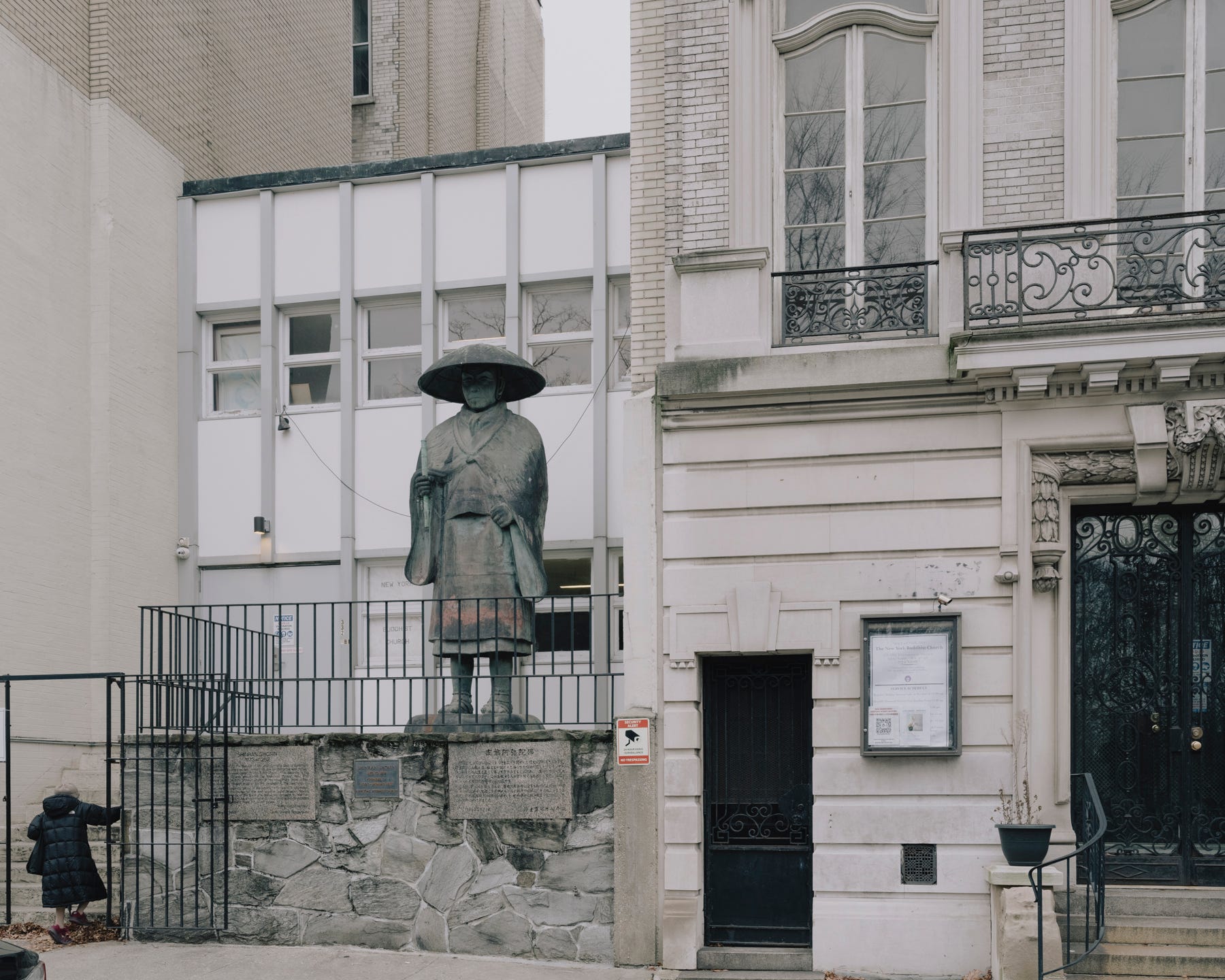
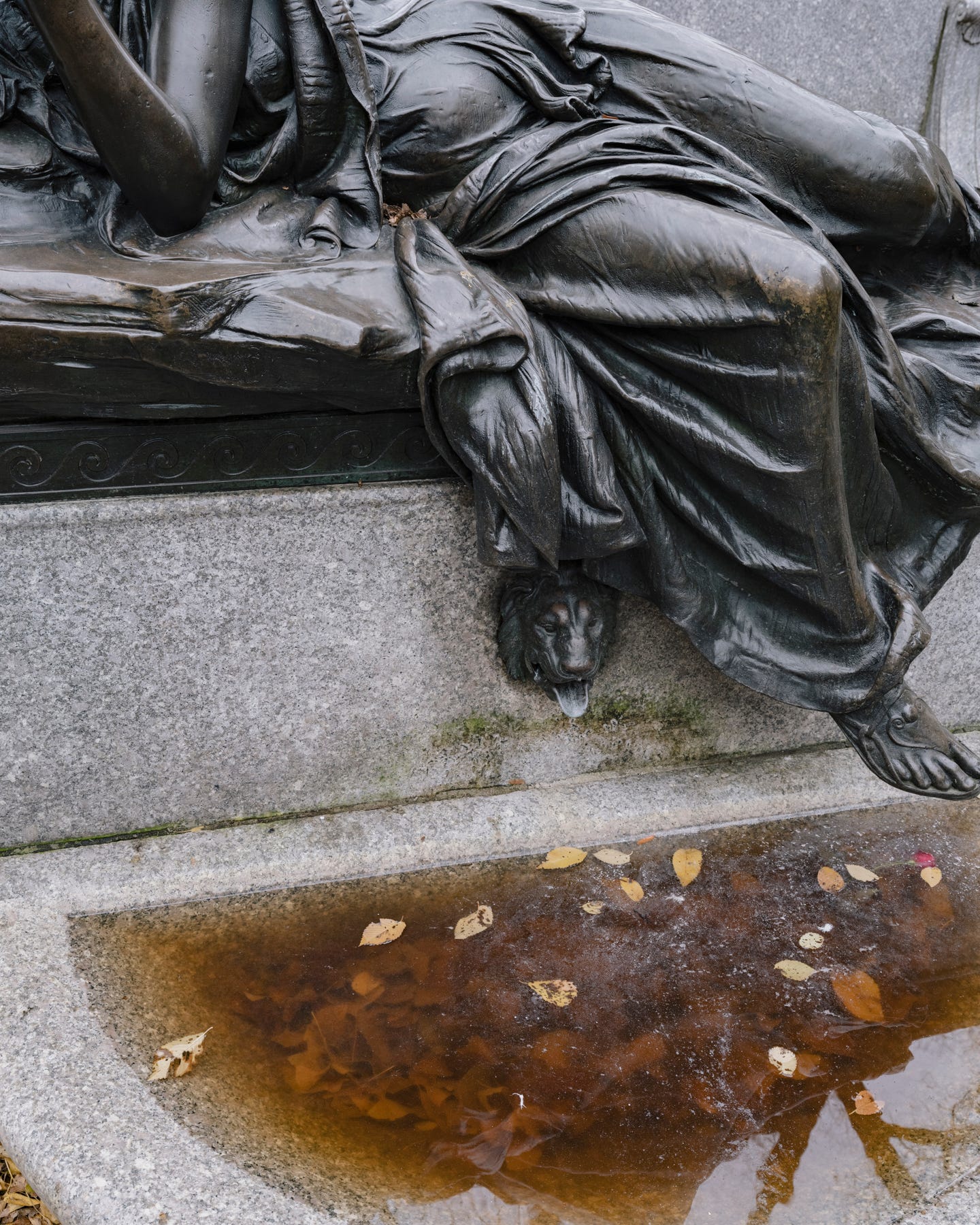
FEATURED PHOTOGRAPHER
Who better to feature this week than longtime Bloomingdale resident and master photographer Joel Meyerowitz? I always say that my time working at Joel’s studio was equivalent to getting an MFA, with the benefit of not being saddled with years of crippling debt.
Joel’s latest book, A Question of Color (Thames & Hudson), documents his experiments in color and black and white photography. There currently is a show of the work at The Tate Modern that, like the book, includes side-by-side black and white and color prints of the same scene shot on two separate cameras.
When I reached out to Joel asking him if he knew what the old neighborhood was called, I figured he would say it was Upper West Side and give me the old Bronx Cheer when I said I had learned it was actually Bloomingdale. On the contrary, he responded right away with Bloomingdale. He also tipped me off to the giant Buddhist statue on Riverside Drive and reminded me to floss.
I’ve always loved Joel’s series of Christmas trees in apartment lobbies.
NOTES
Speaking of Christmas Trees, if you haven’t read this piece by Owen Long on who controls the majority of the city’s ubiquitous Christmas Tree stands (hint: Tom Cruise gets a significant discount), I highly recommend you do!
In the Chelsea edition of The Neighborhoods, I talk about how Clement Clarke’s The Night Before Christmas is often credited for our modern conceptions of Santa. Well, Washington Irving would like a word as his Knickerbocker's History of New York (written fourteen years prior) describes a St. Nicholas who “smokes a pipe and places gifts in the stockings that children have hung by the chimney.” He also wrote about caroling, mistletoe, and other English Christmas traditions in his collection of essays and short stories, “Sketch Book,” playing a large part in codifying Christmas observances in the States. Read more here: How Christmas Became Merry.
Sick of all this Christmas talk? Maybe you’ll enjoy these pictures of our dog disemboweling and dismembering a stuffed Santa.
Bloomingdale is home to at least two foodie destinations. First is Absolute Bagels on Broadway near 108th. The bagels are small (as they should be), they only take cash, and don’t bother going on the weekend. Then there is Mama’s Too, a slice place, immortalized by Pete Wells in a glowing NYTimes review where he waxes poetic on the pleasure of tearing into a “bulge of crust” dotted with “little cups” of oil-filled pepperoni that gives way with a “ferocious crackle”. I thought it was ok
Just a reminder that I’ll be taking two weeks off from the newsletter, so I'll be back with a new round of neighborhoods on January 11th. I hope everyone has a great end of the year!
https://www.landmarkwest.org/the-old-community-before-urban-renewal/
https://en.wikipedia.org/wiki/Opus_Dei_(book)




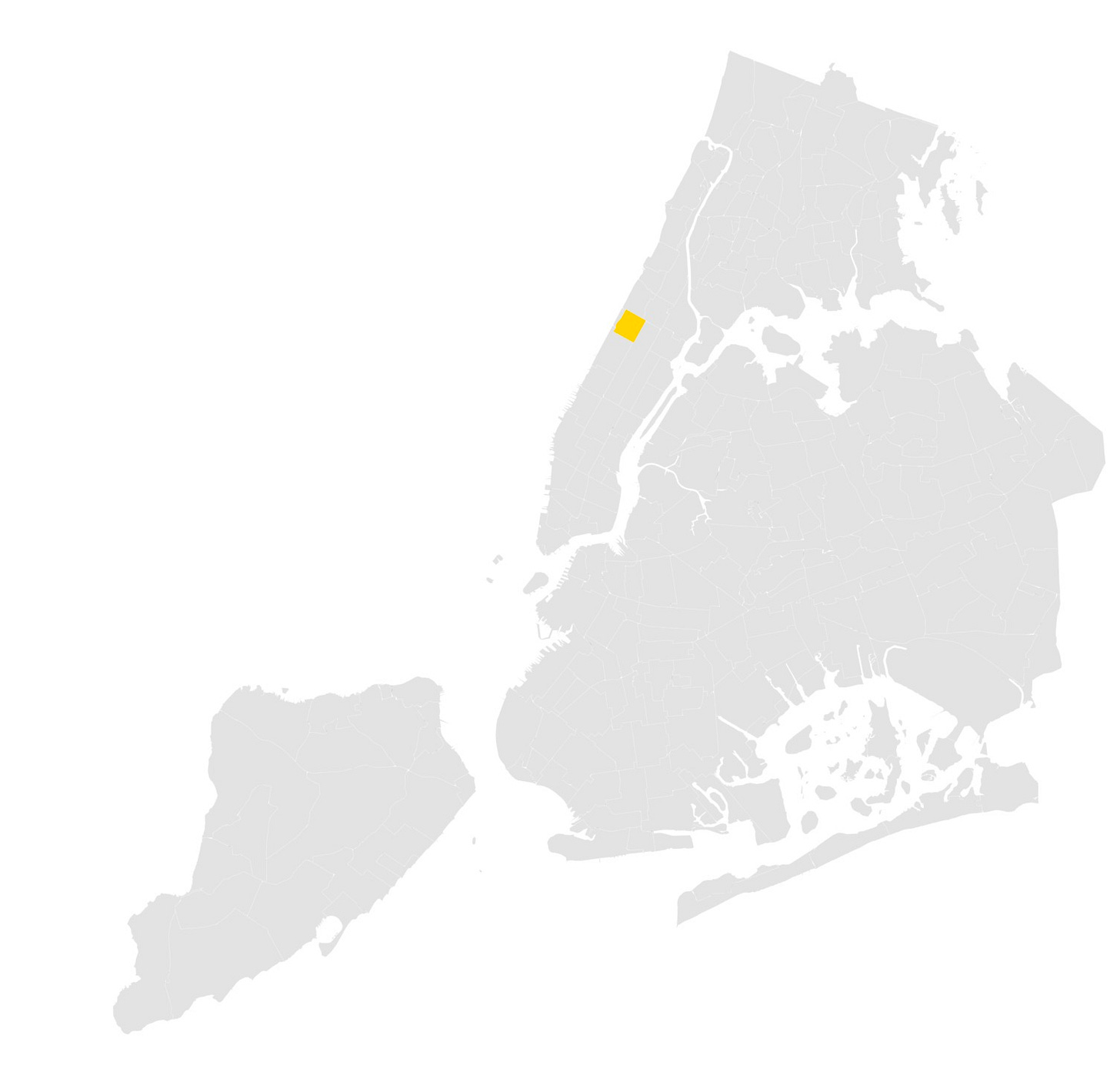
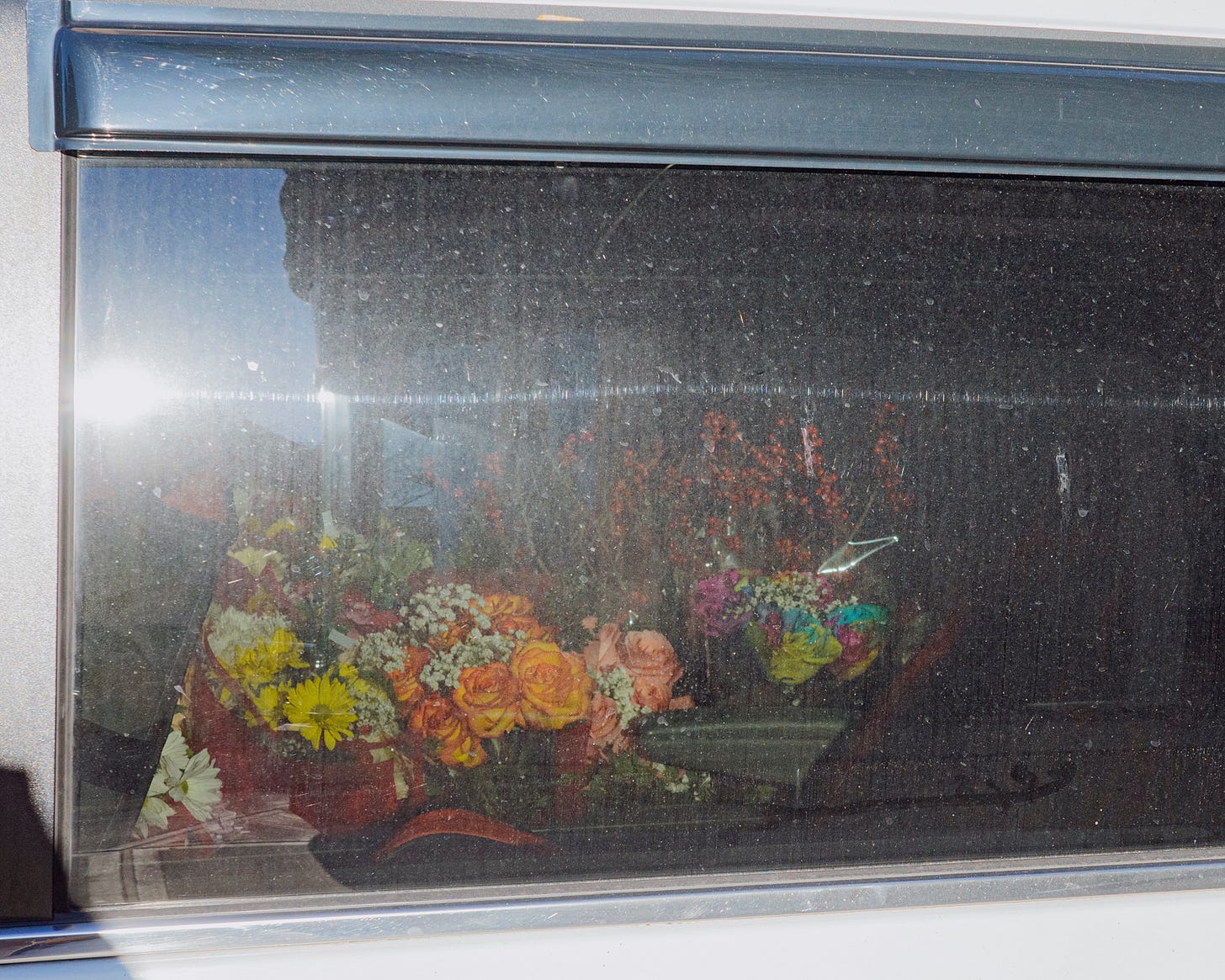
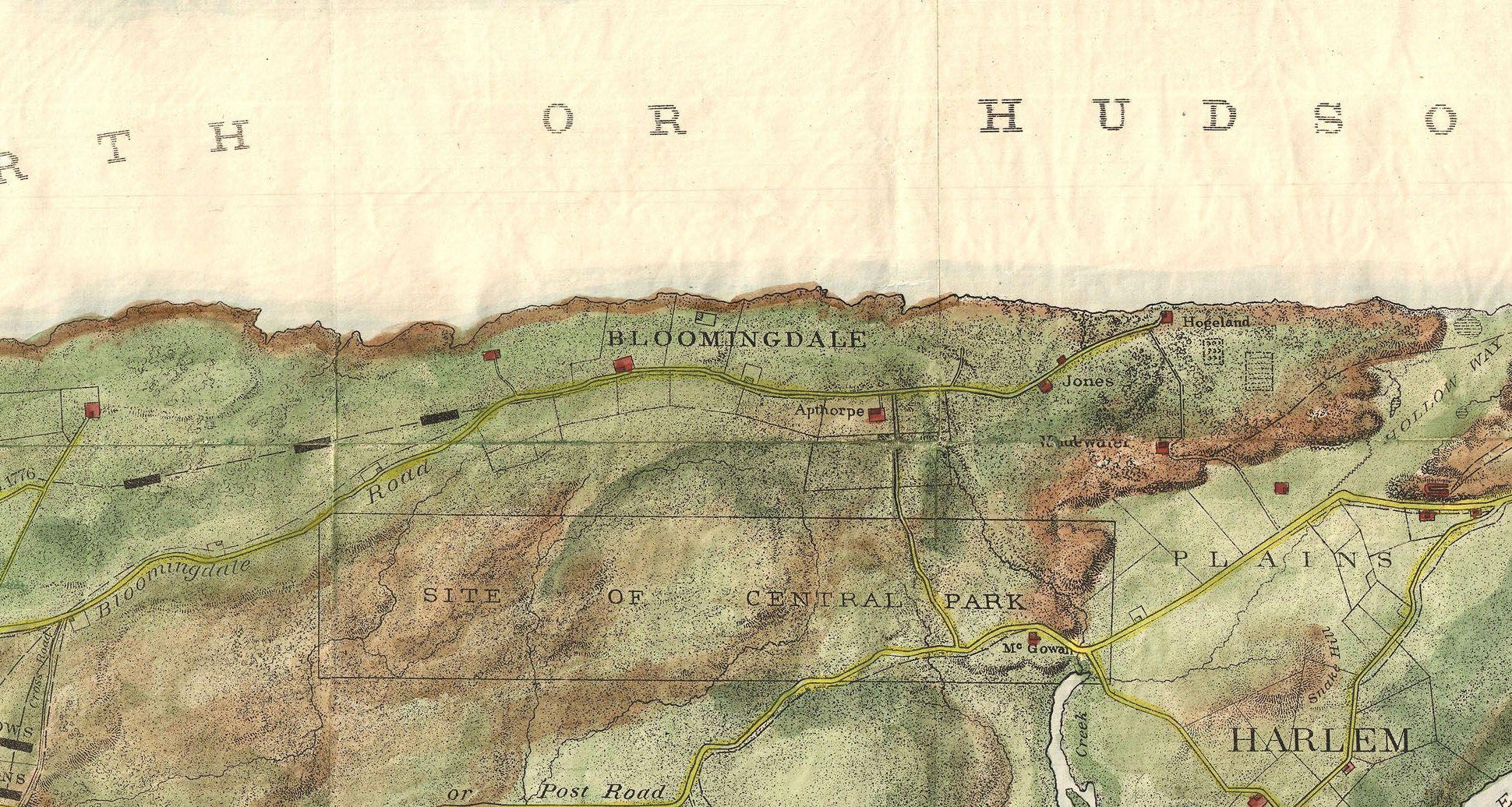
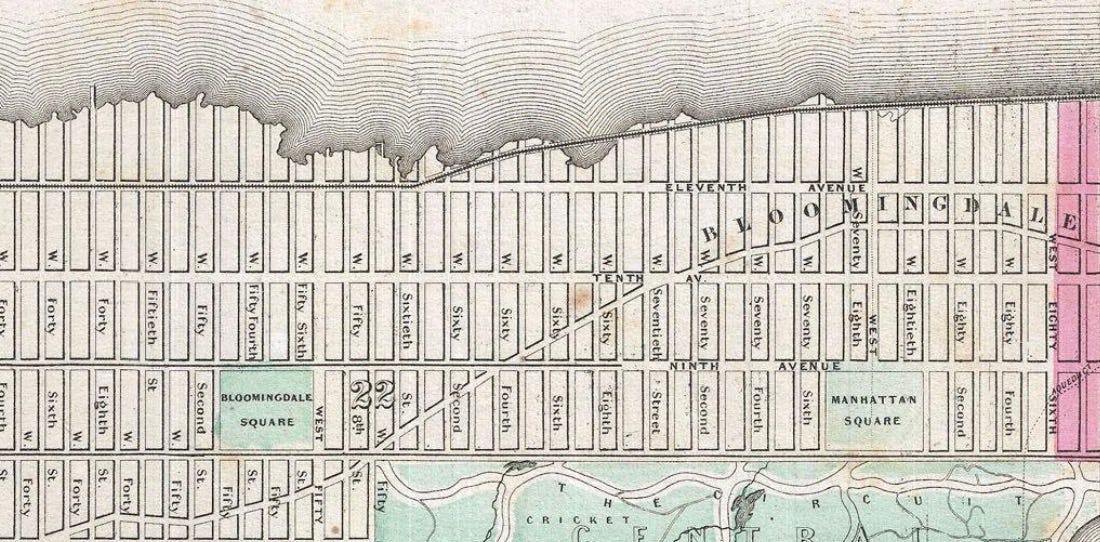

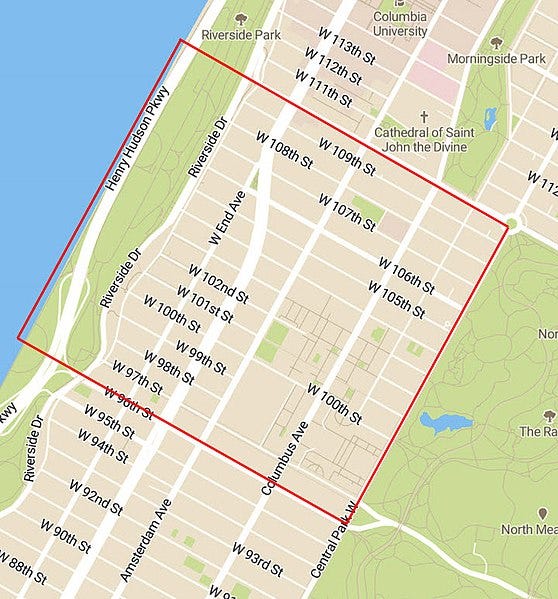
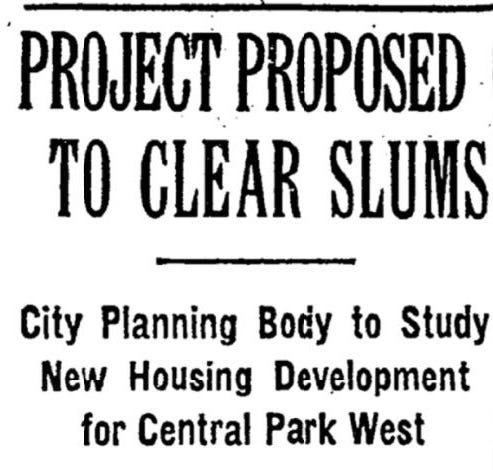
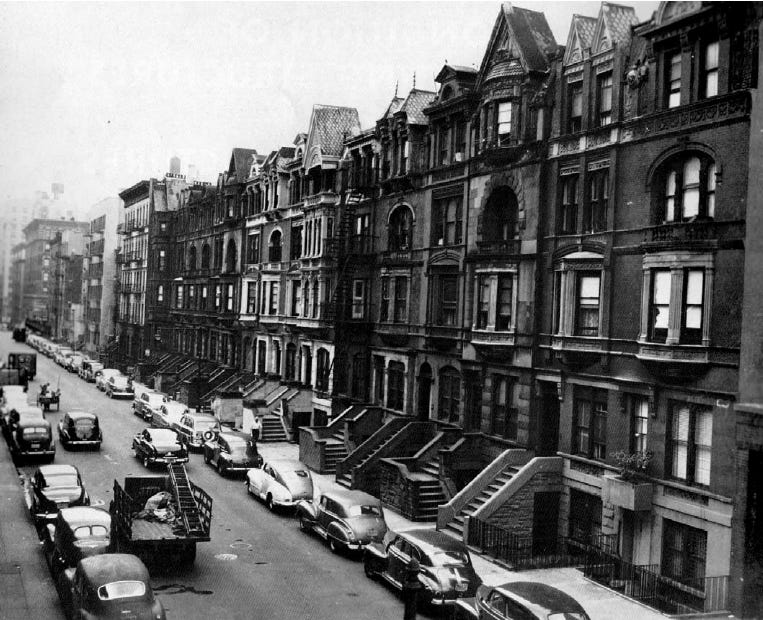
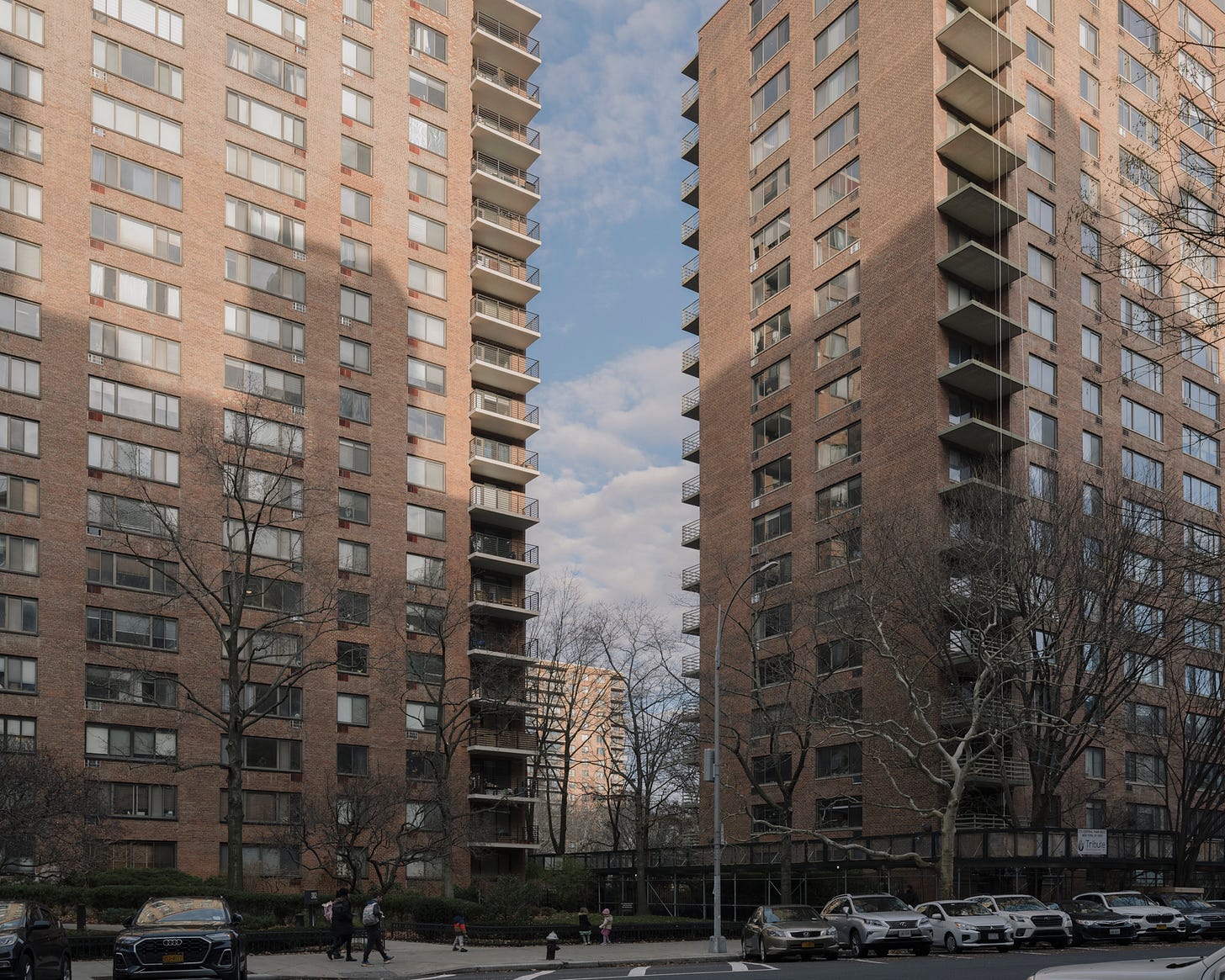
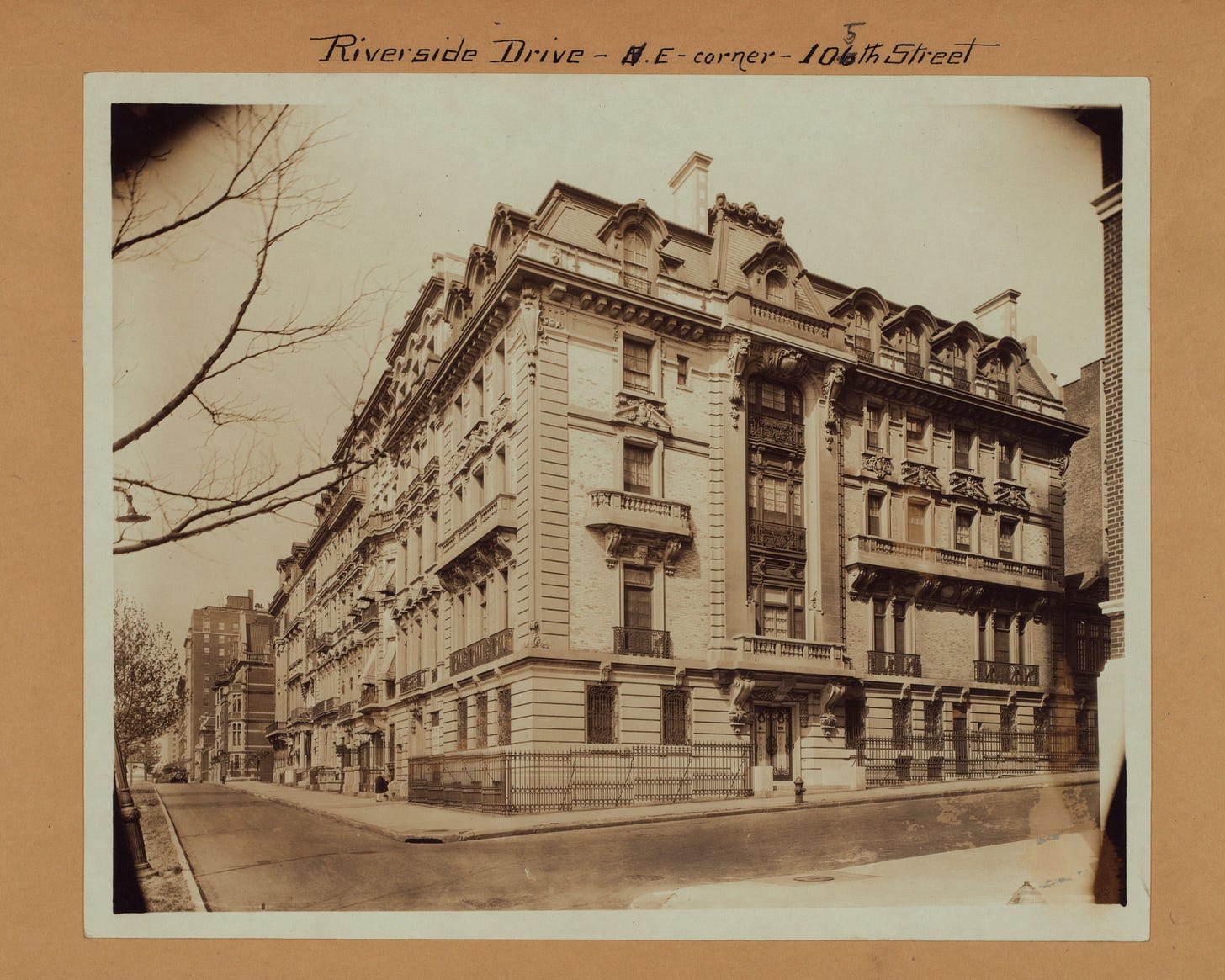

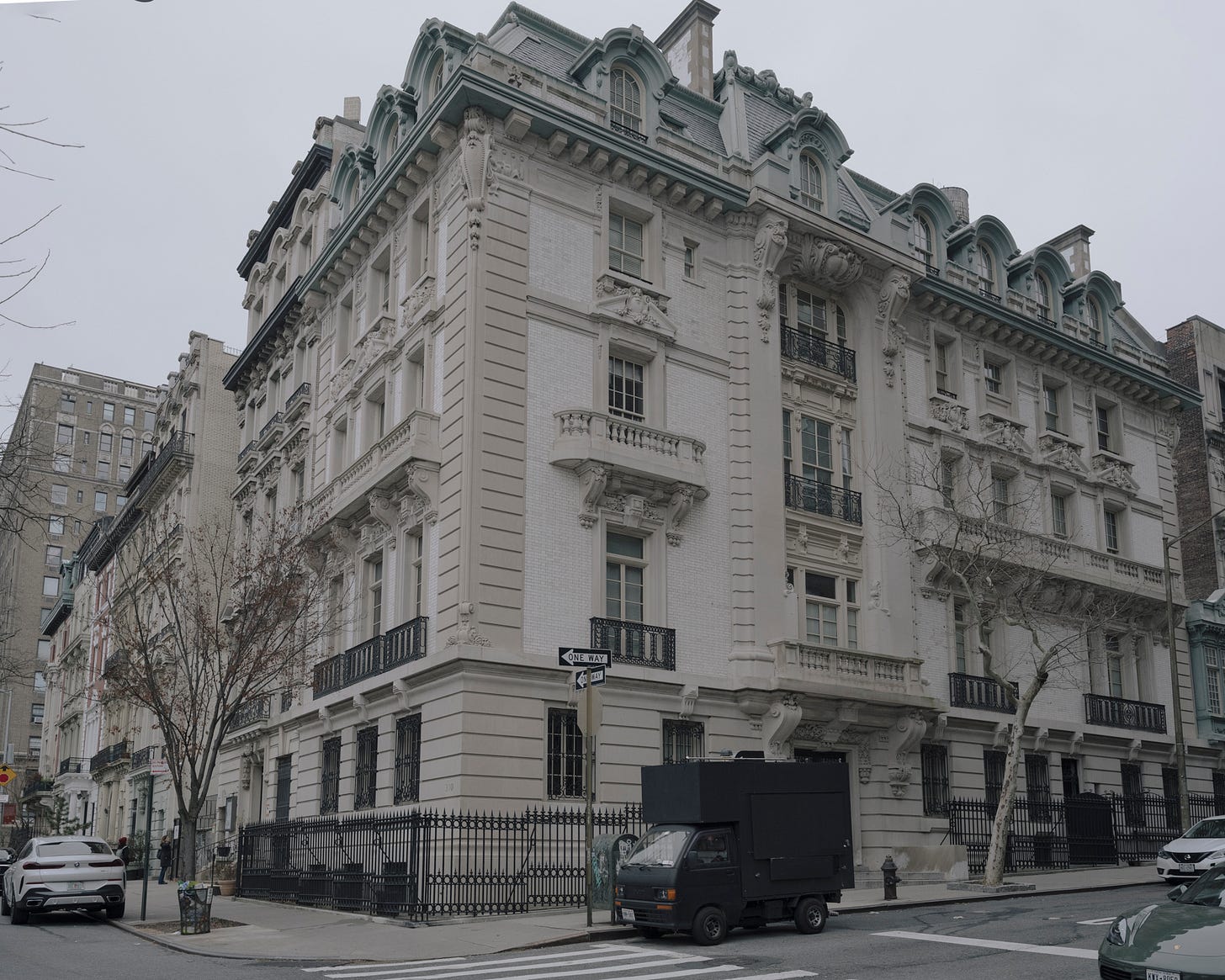
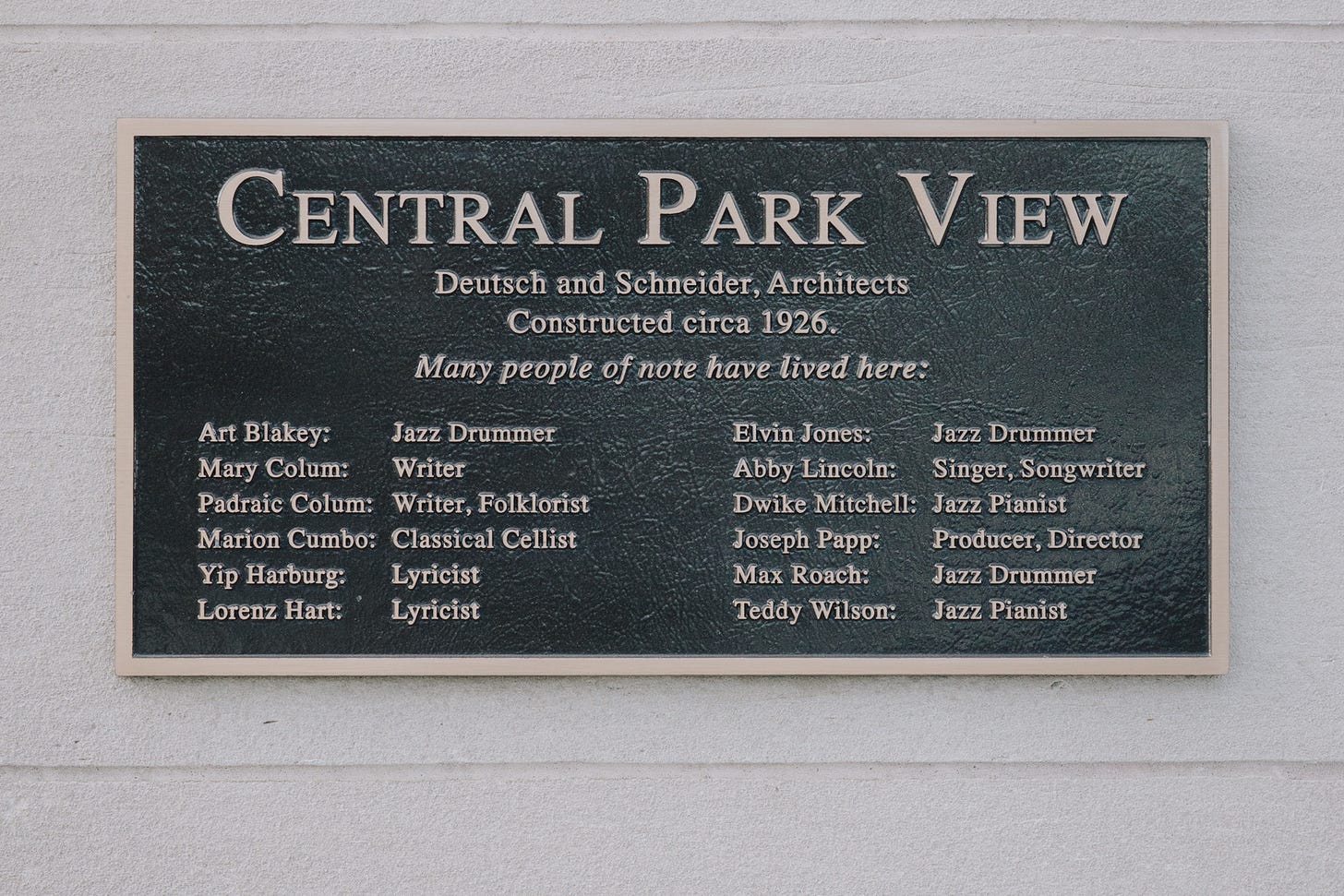

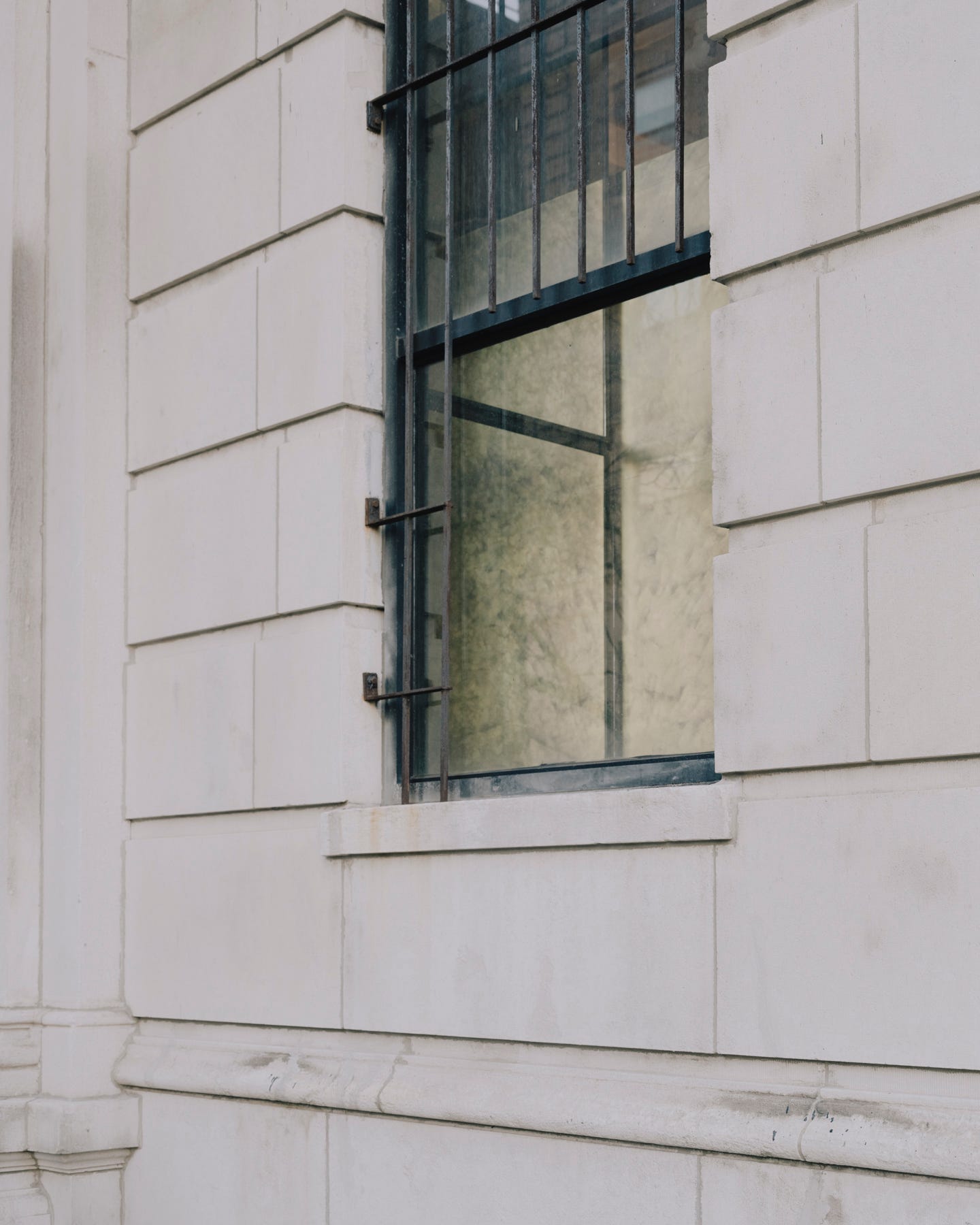
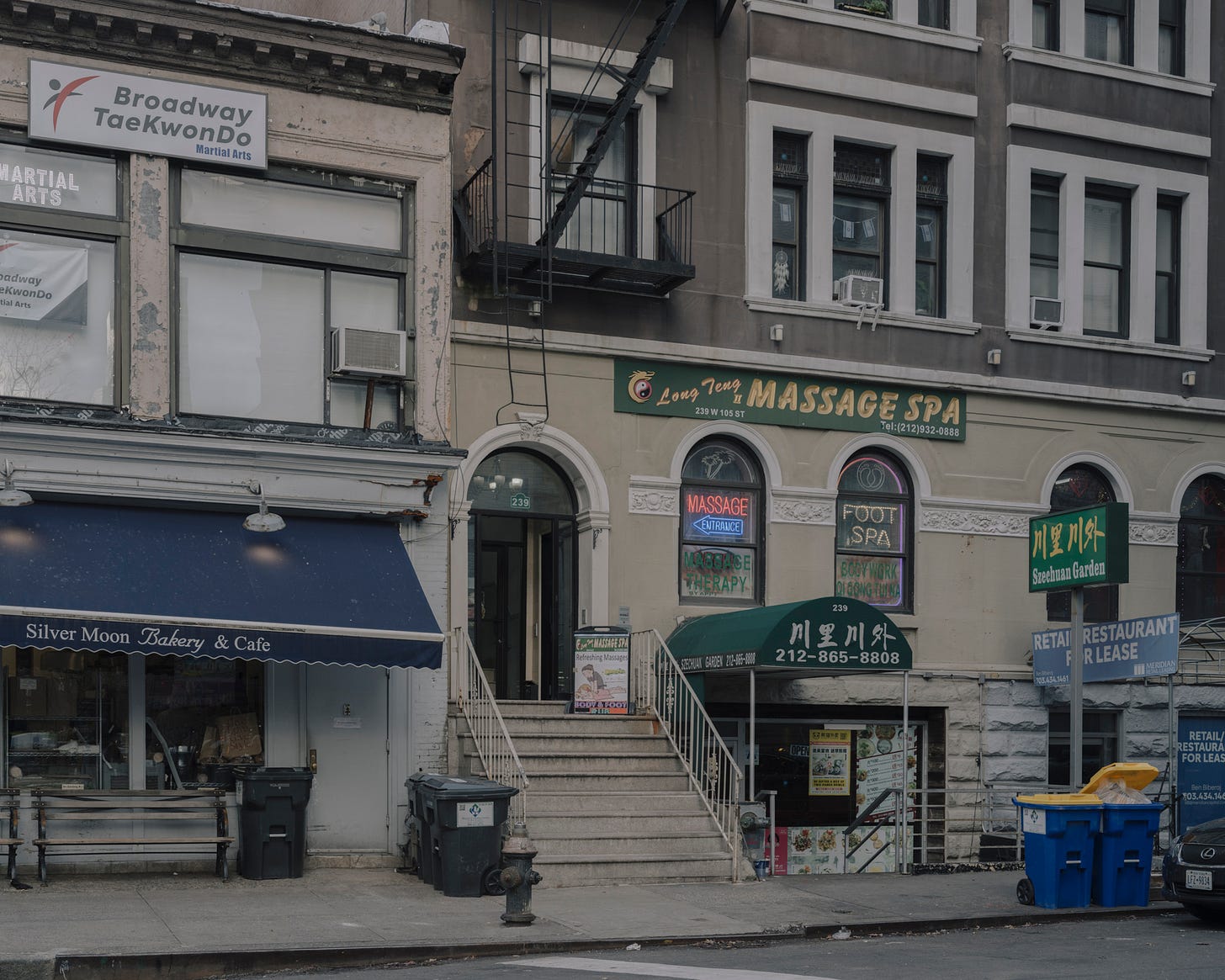
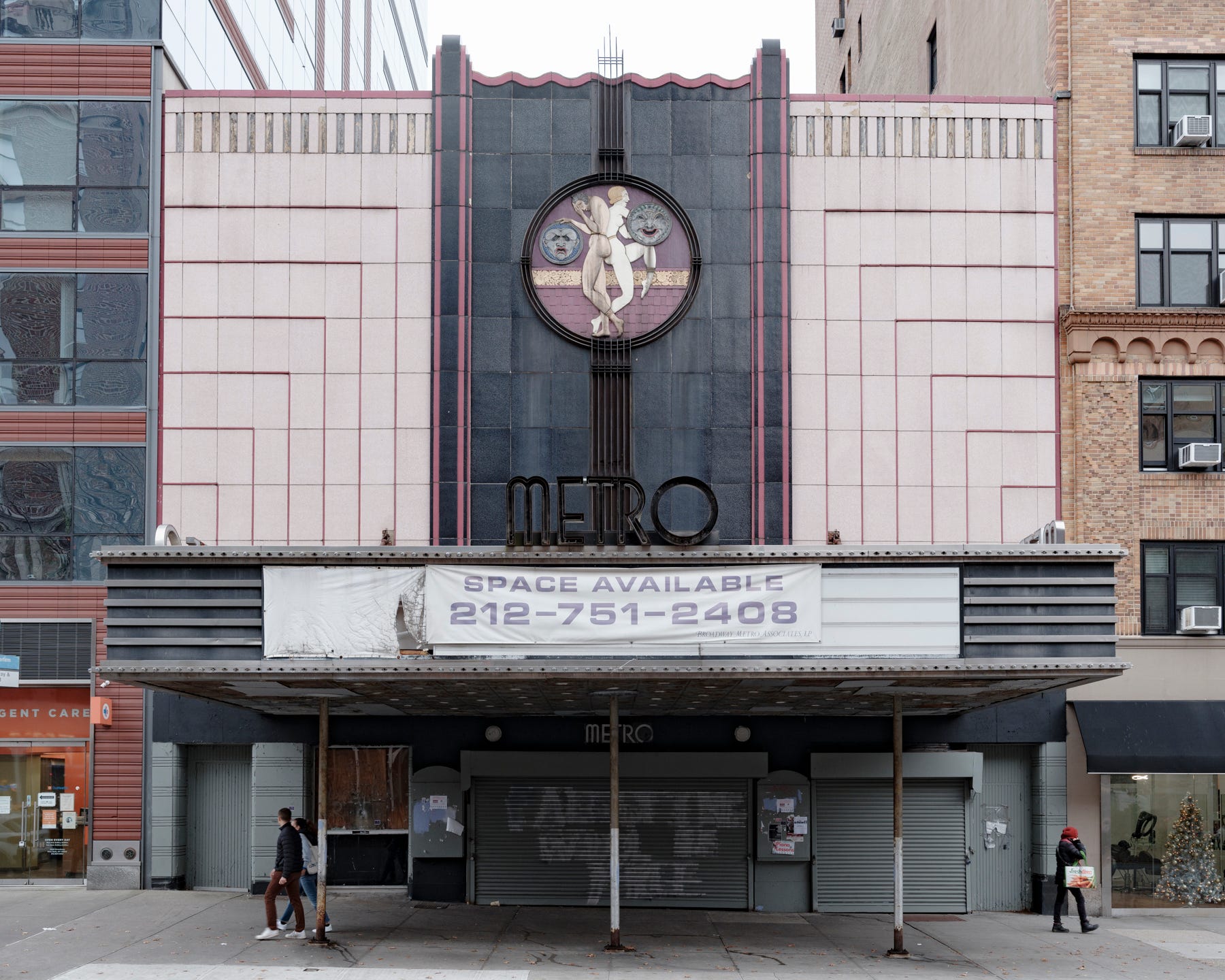

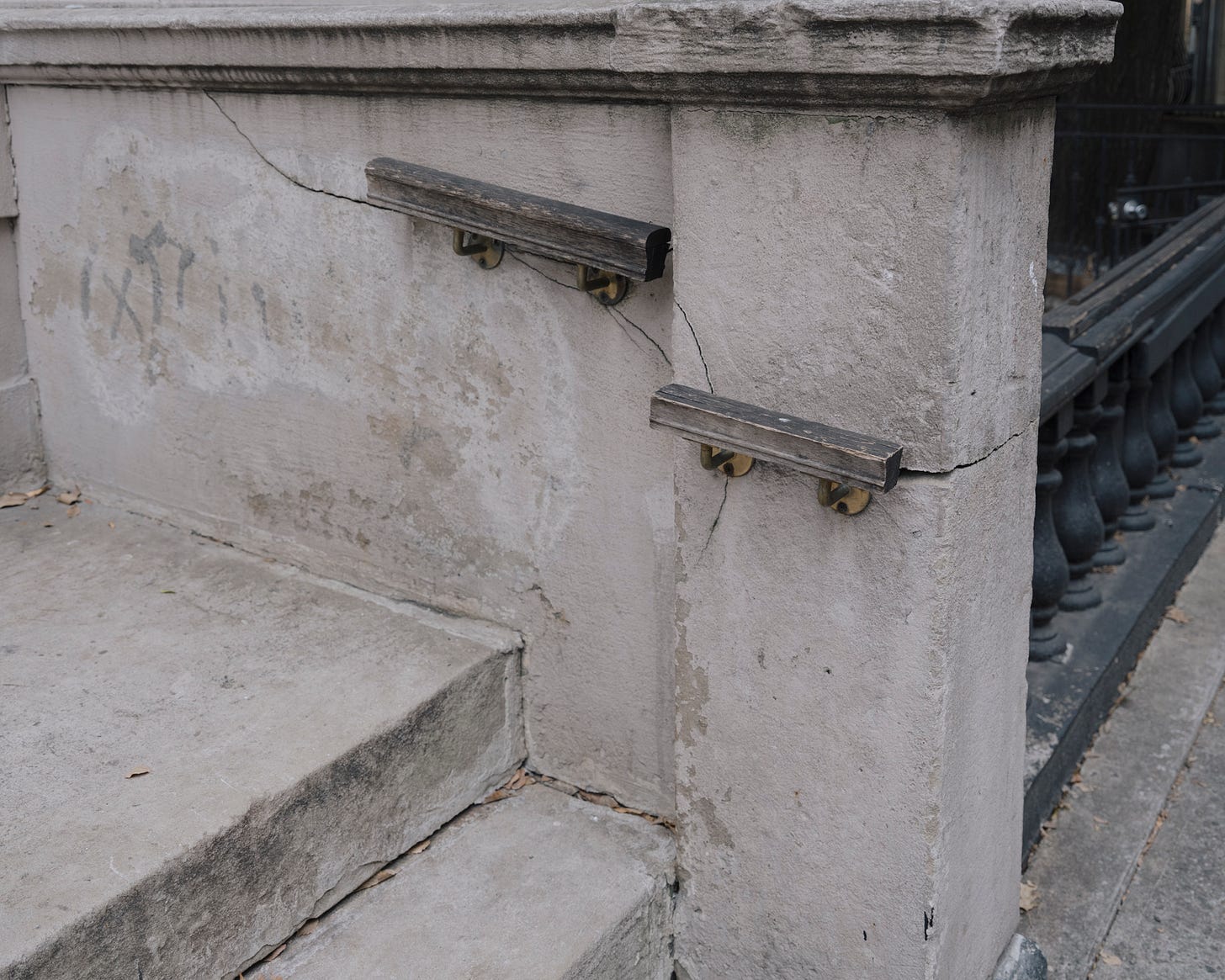
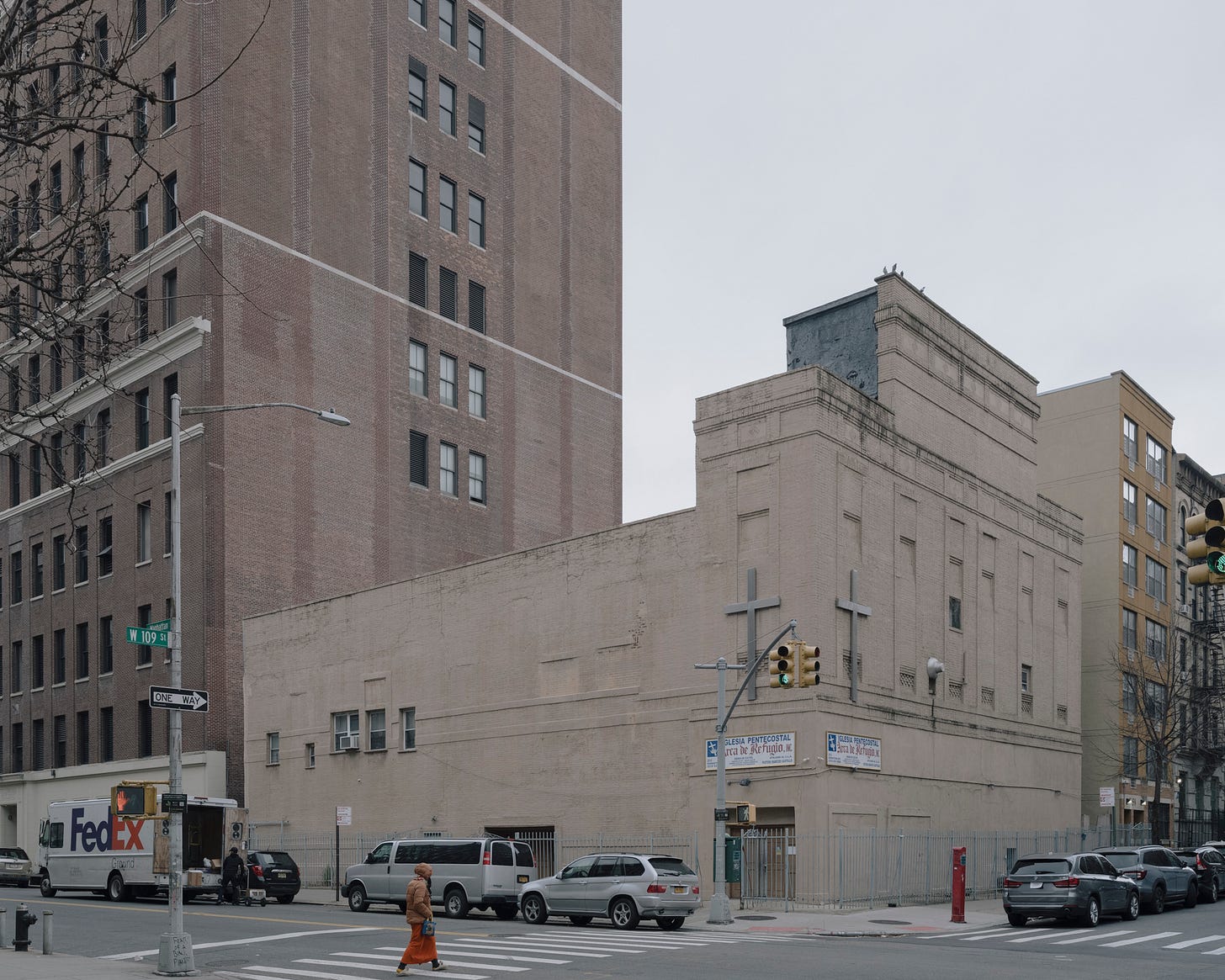
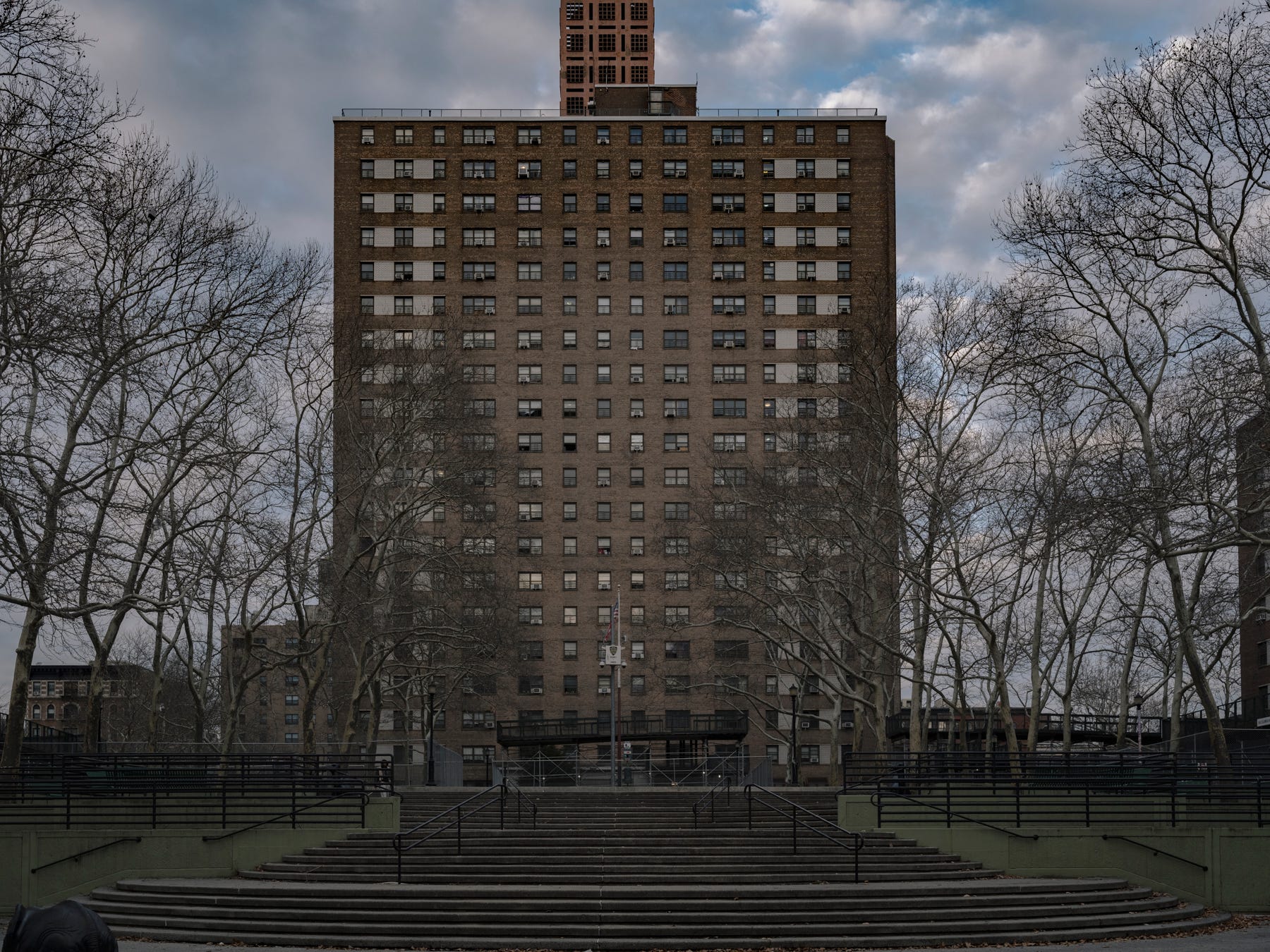
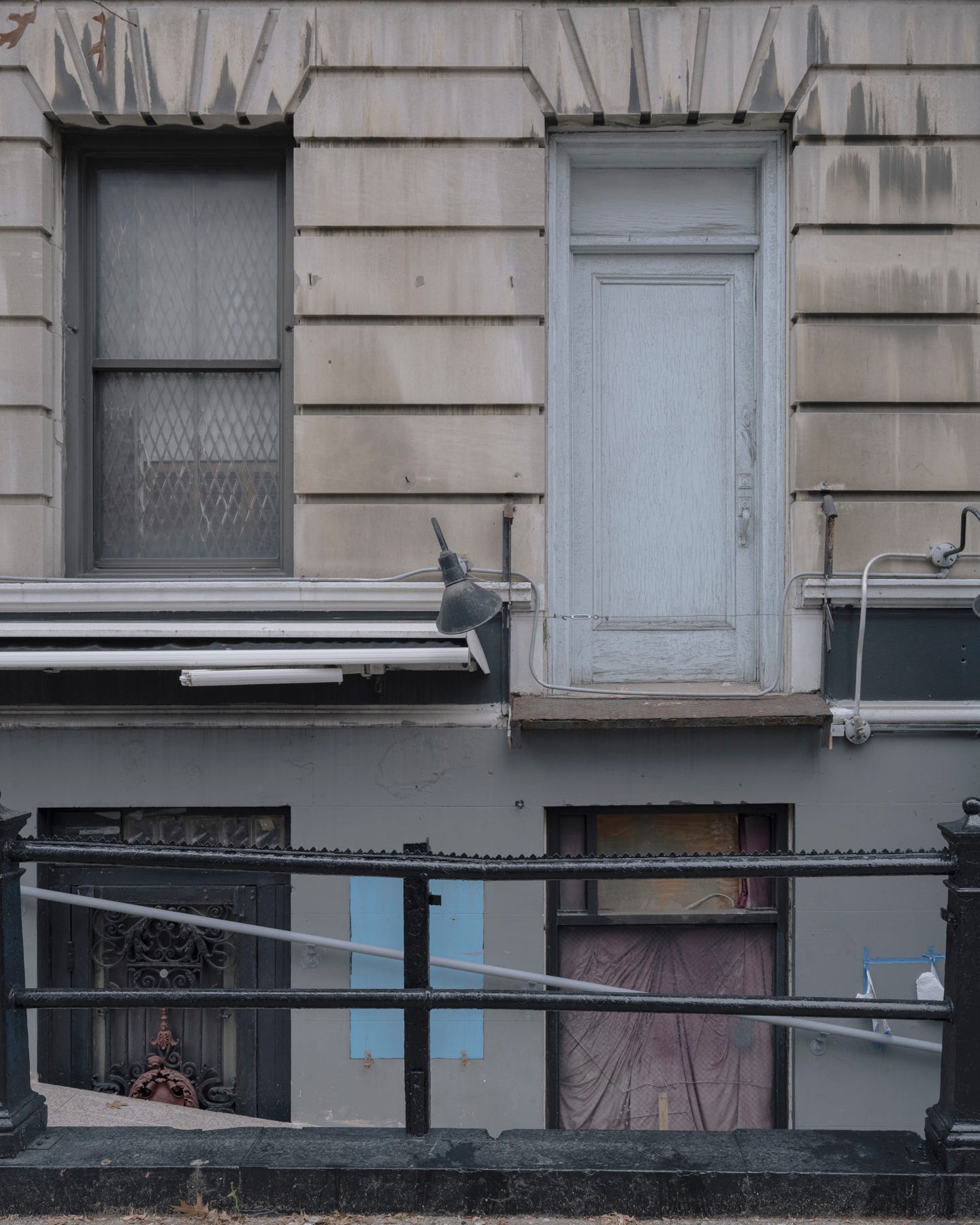
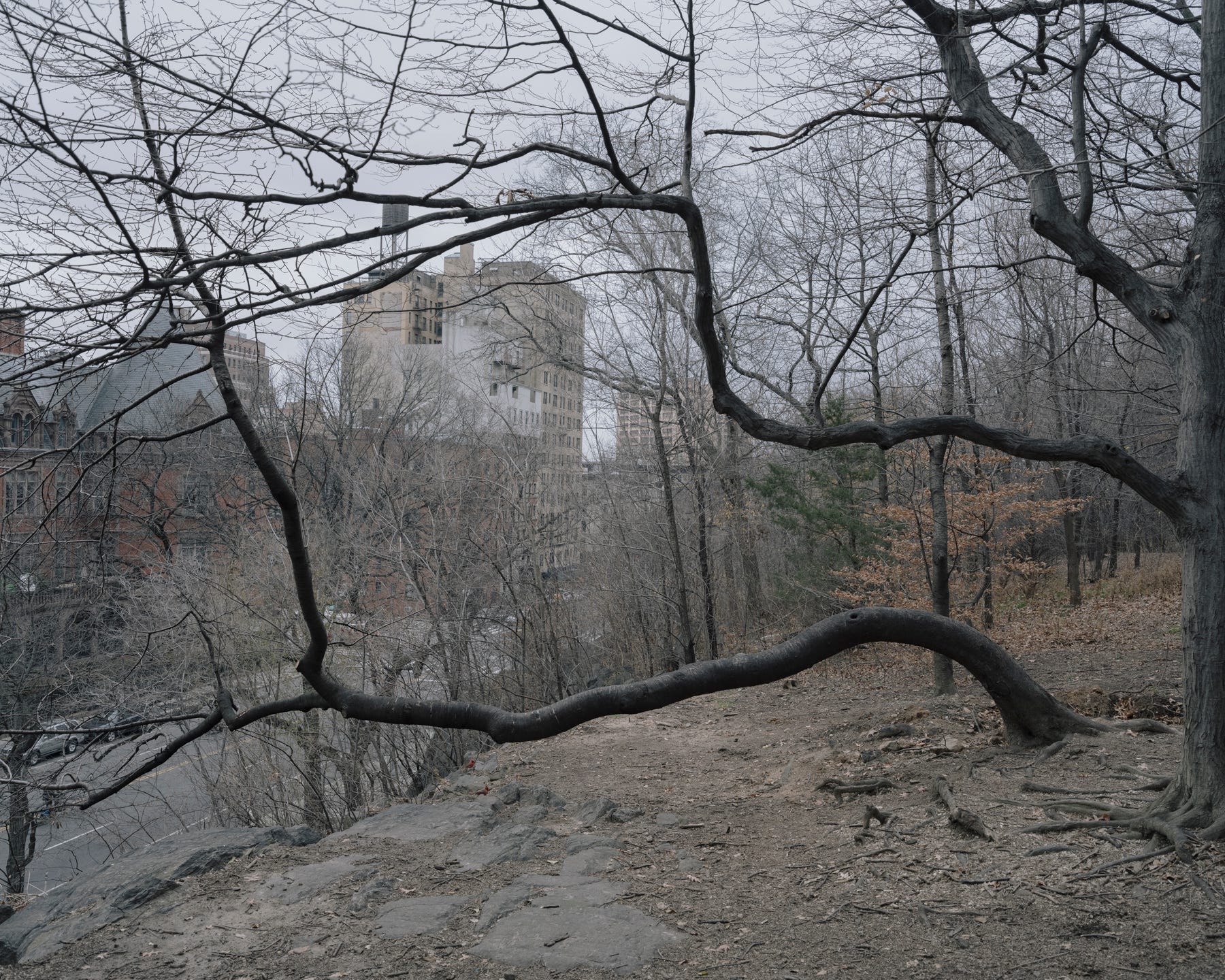
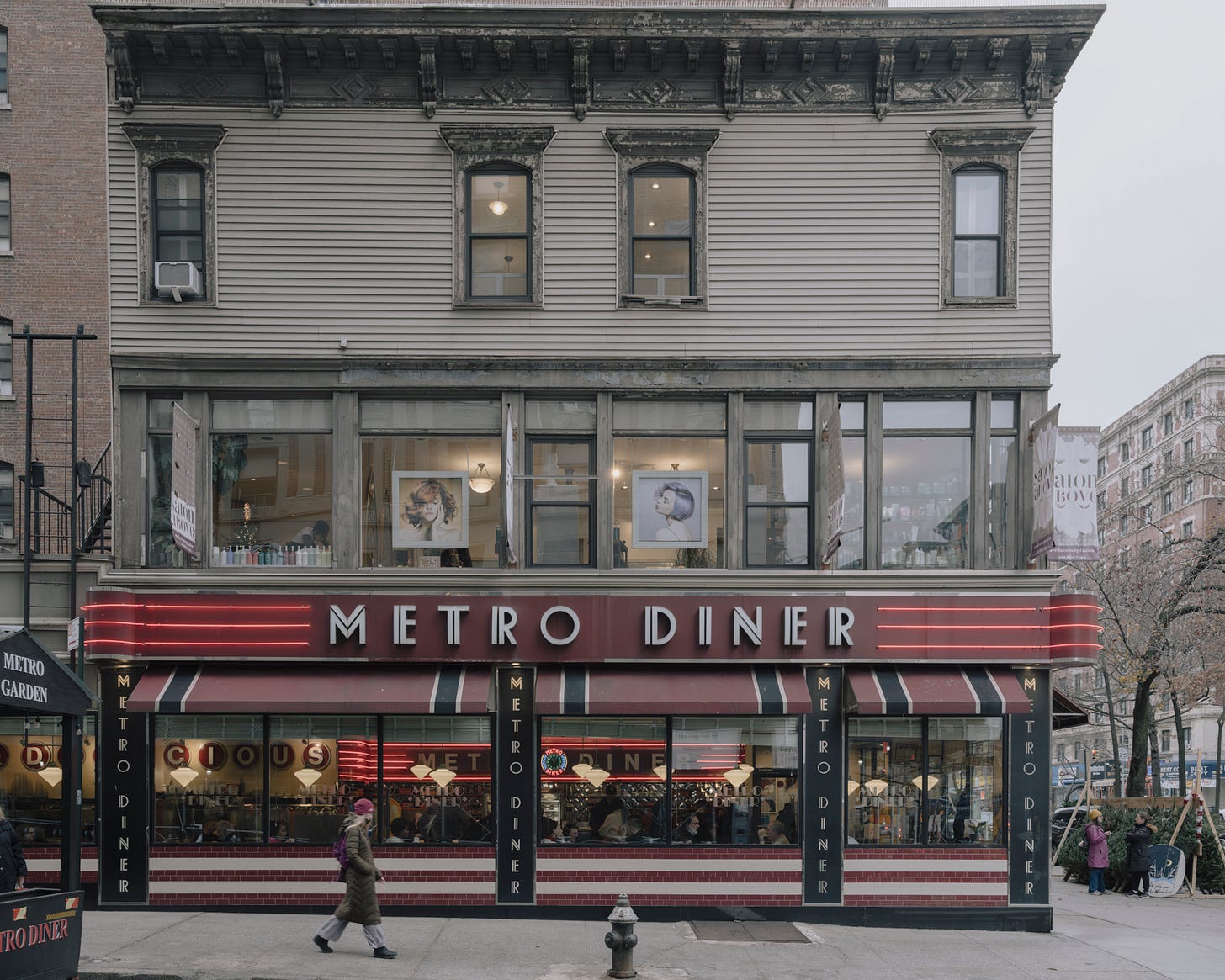
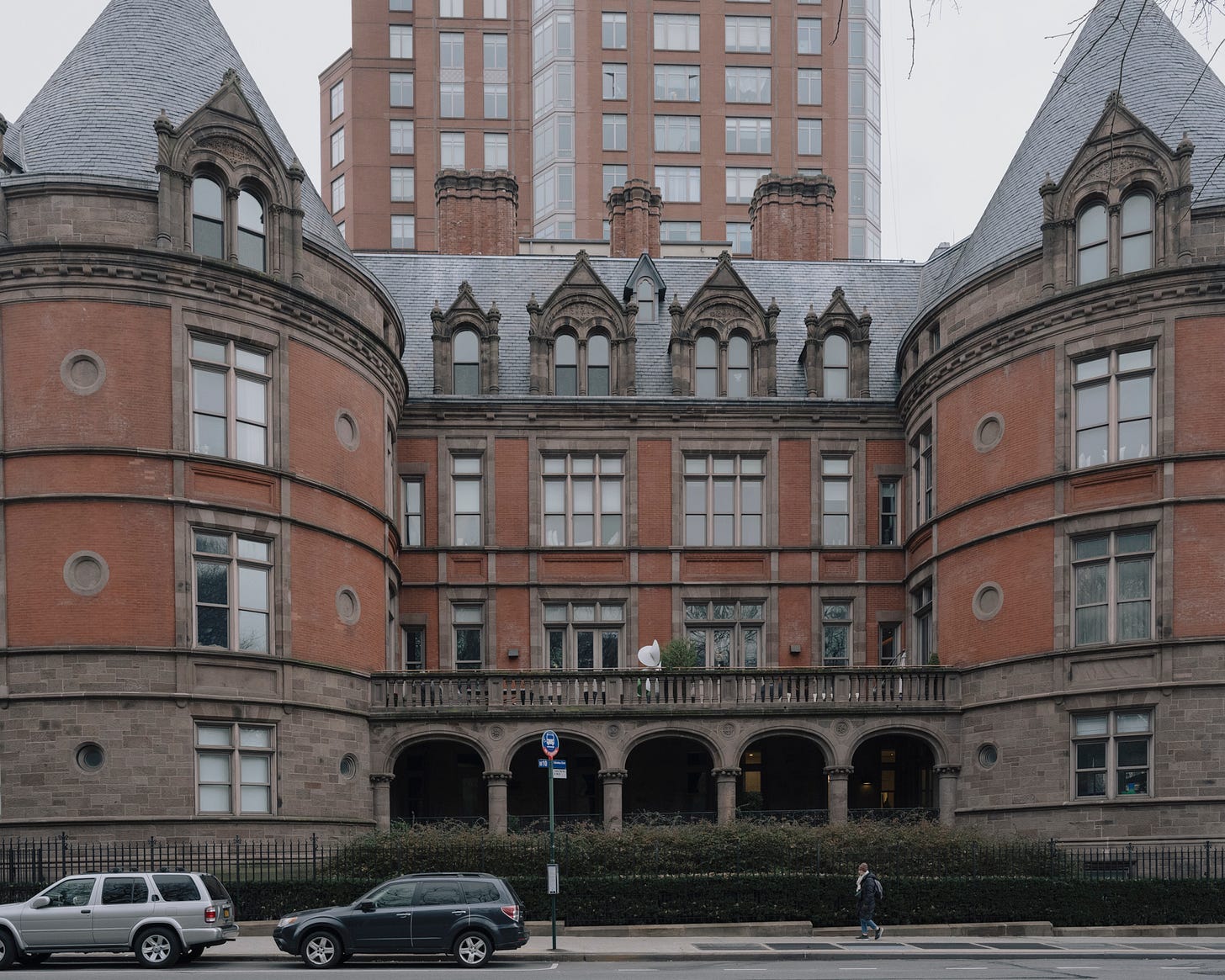

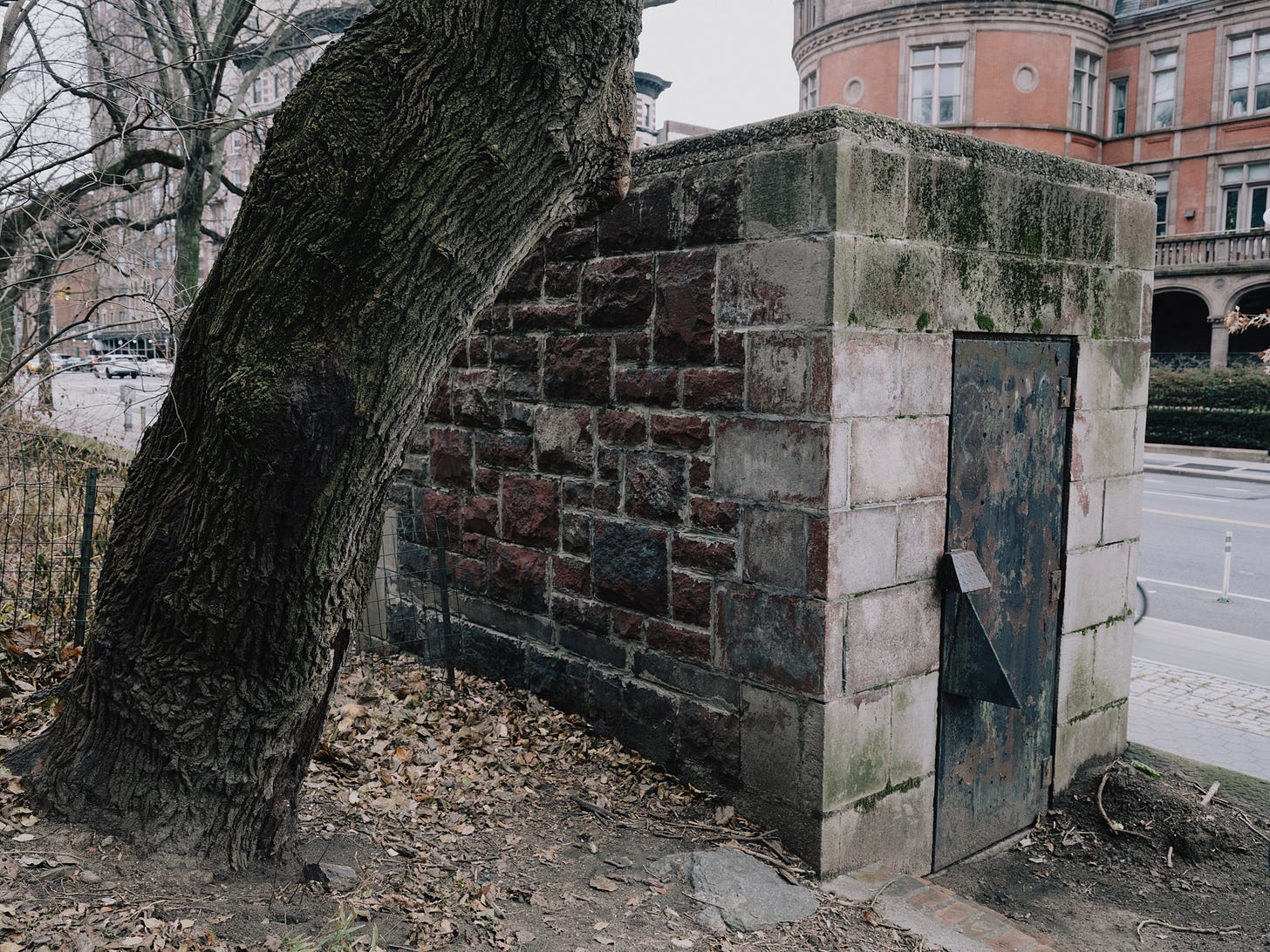
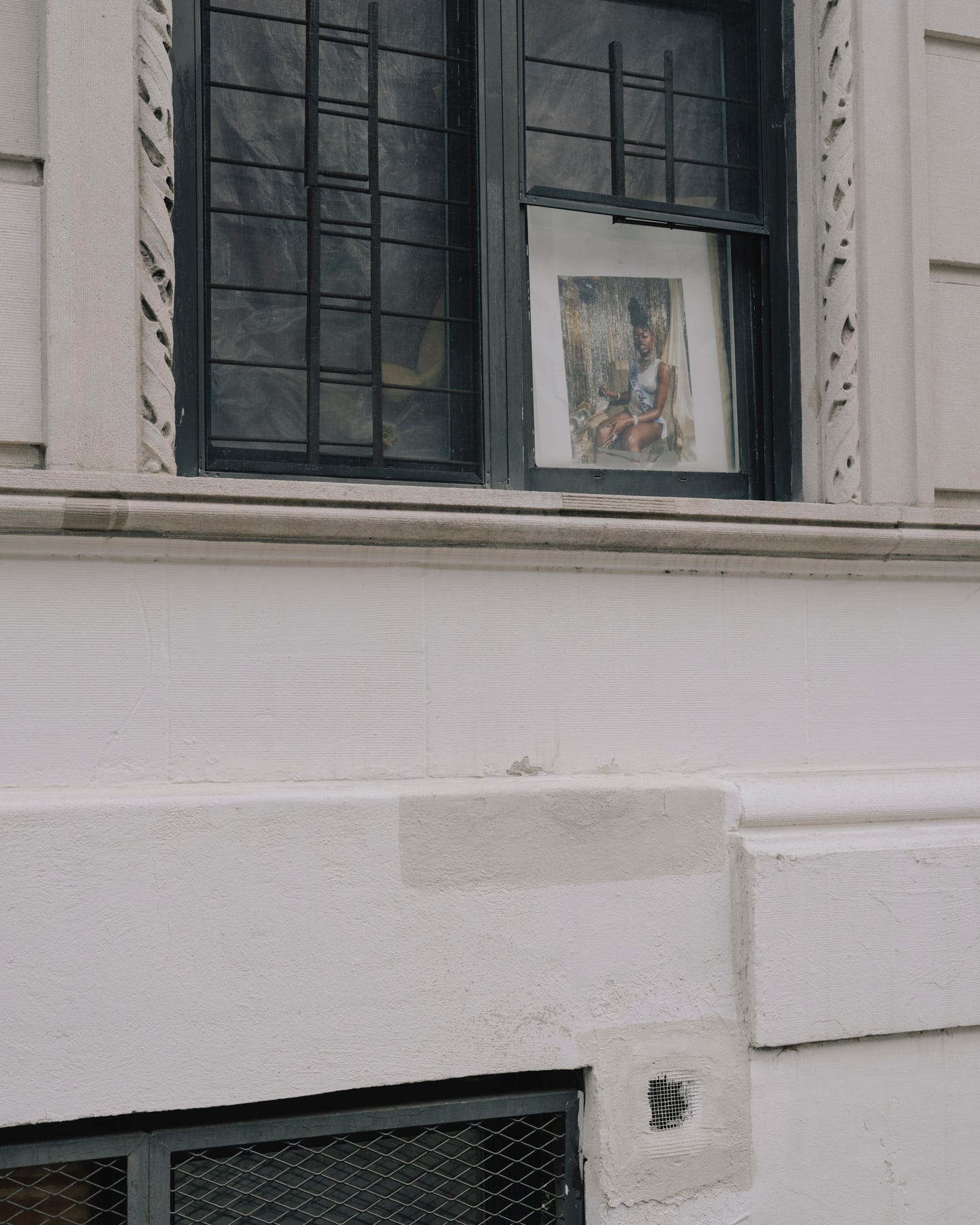
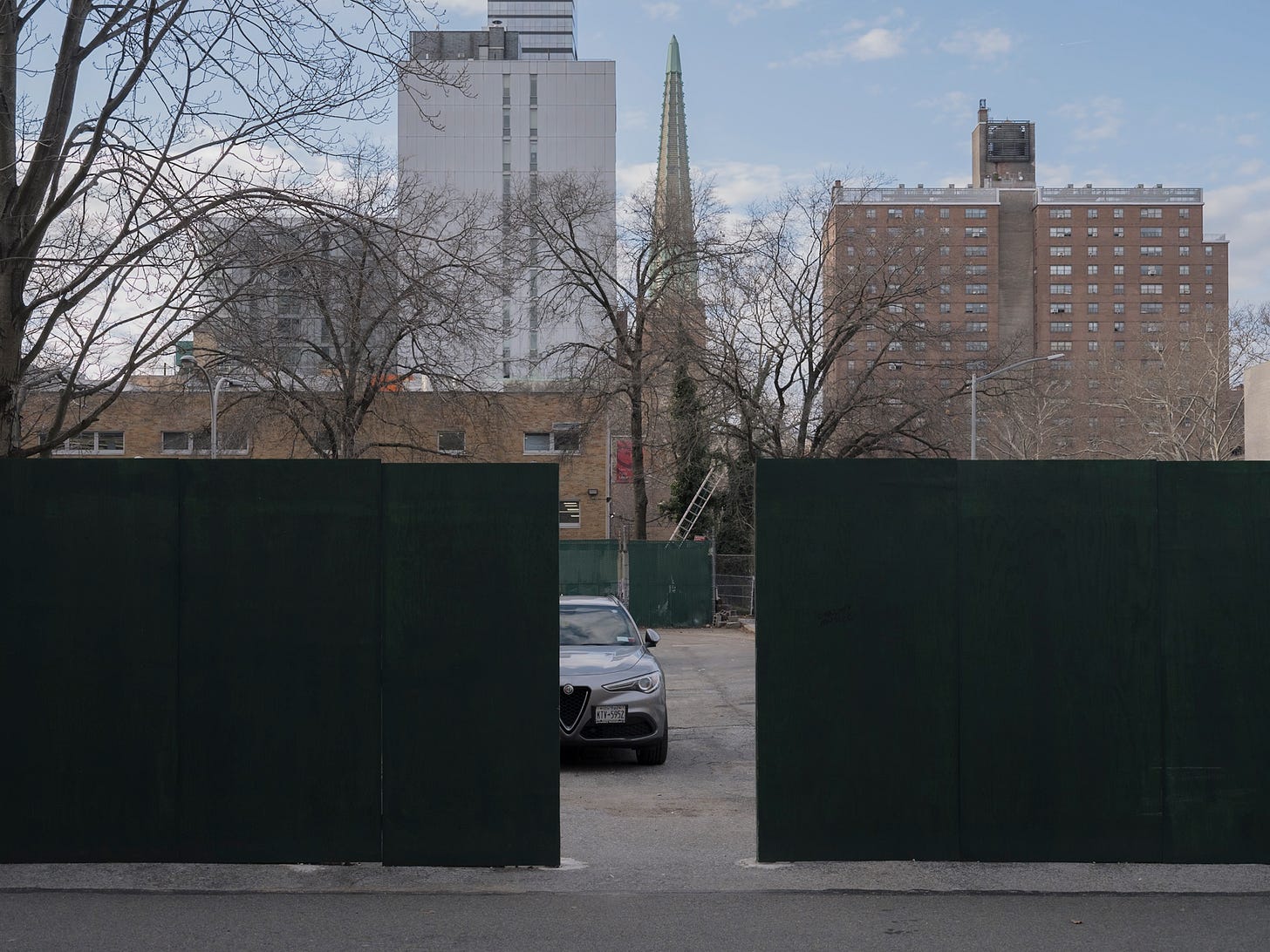
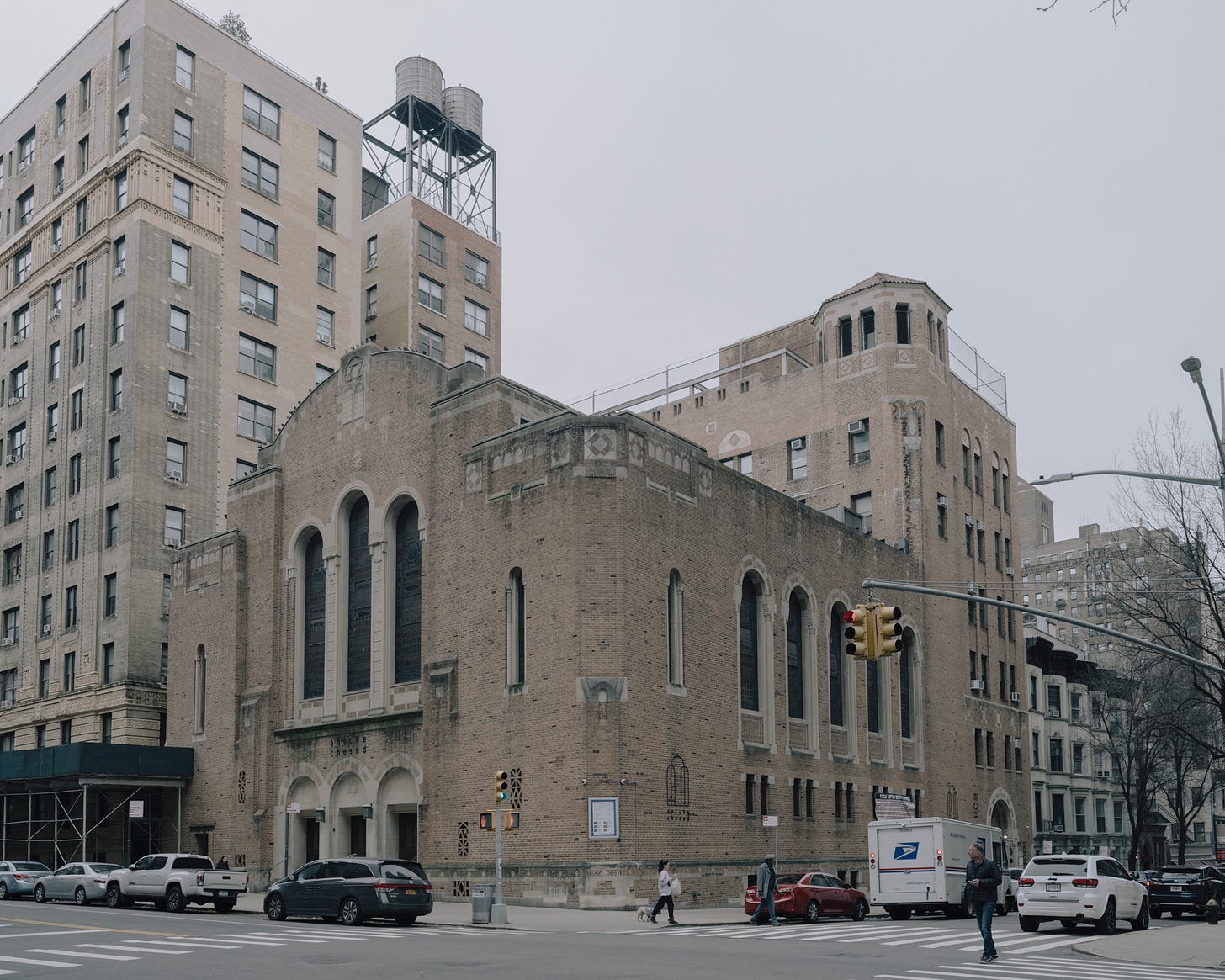

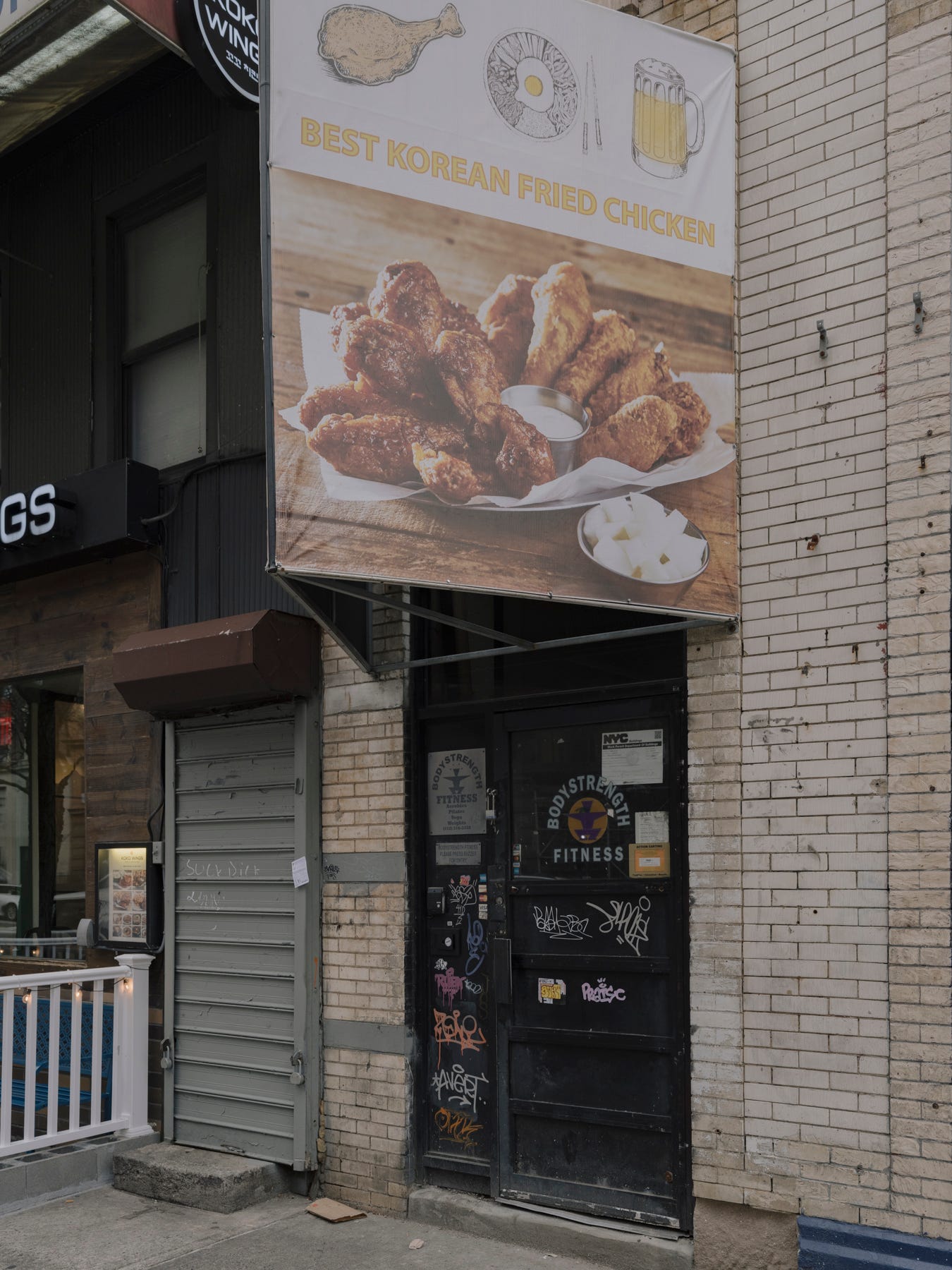
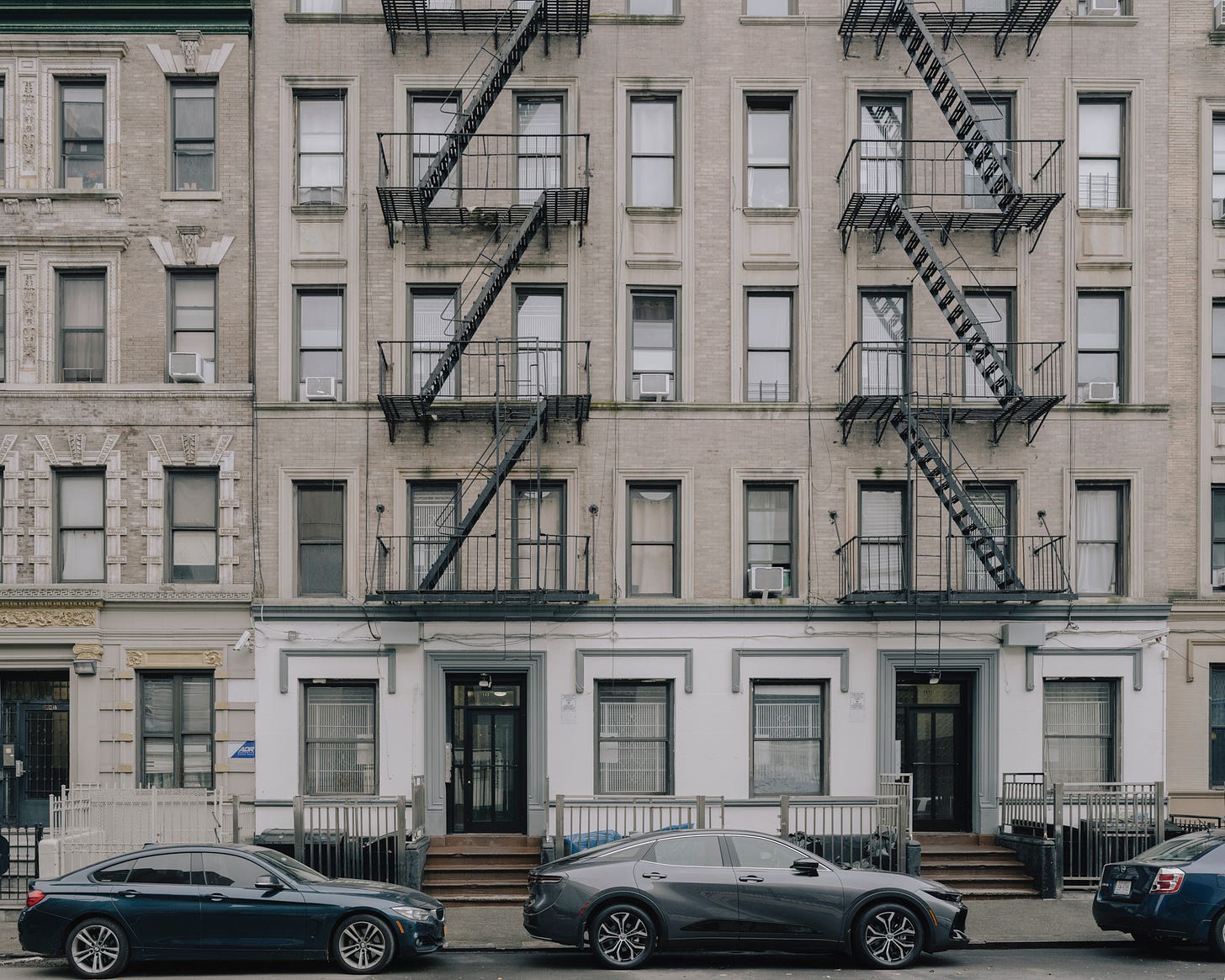
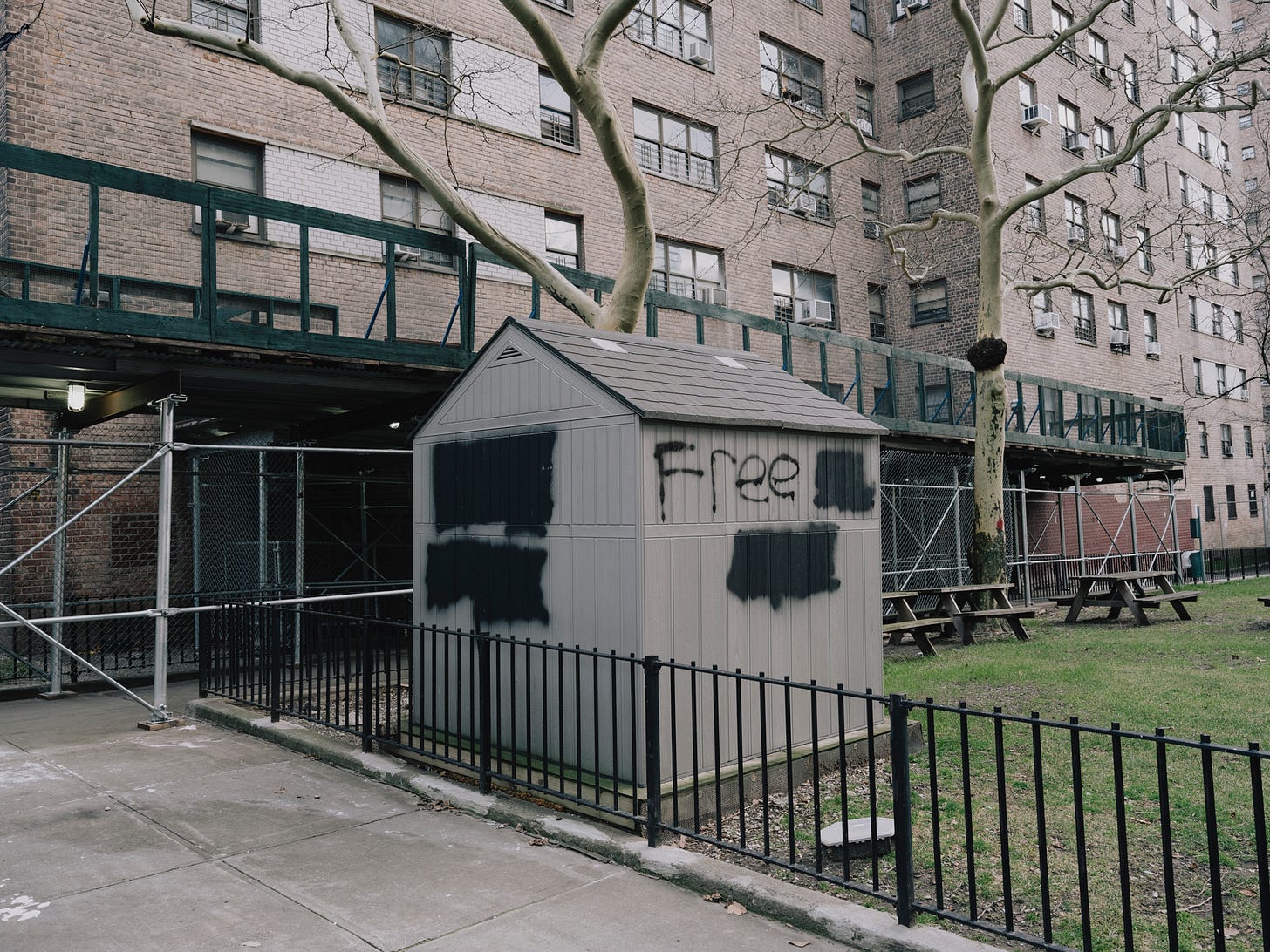
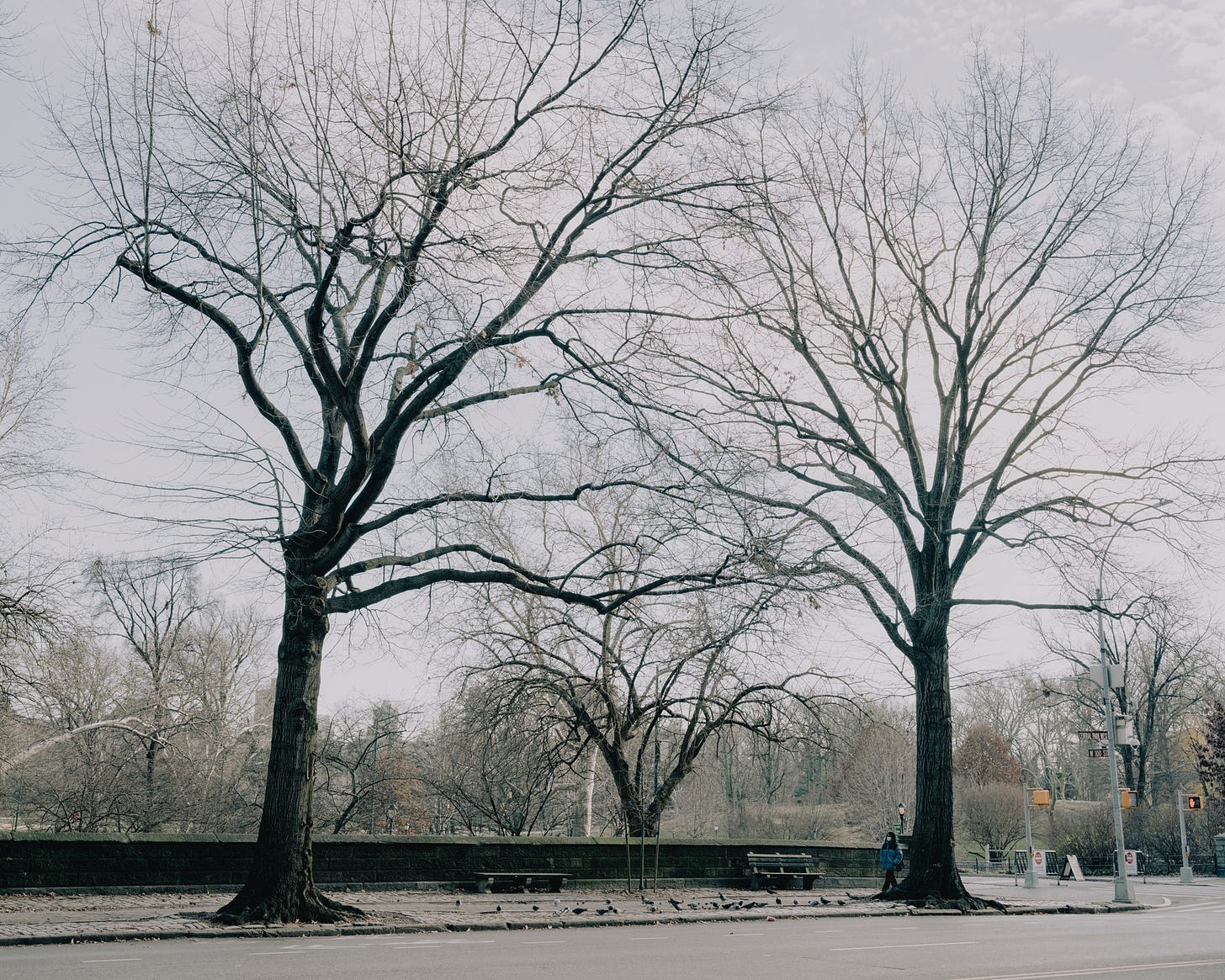
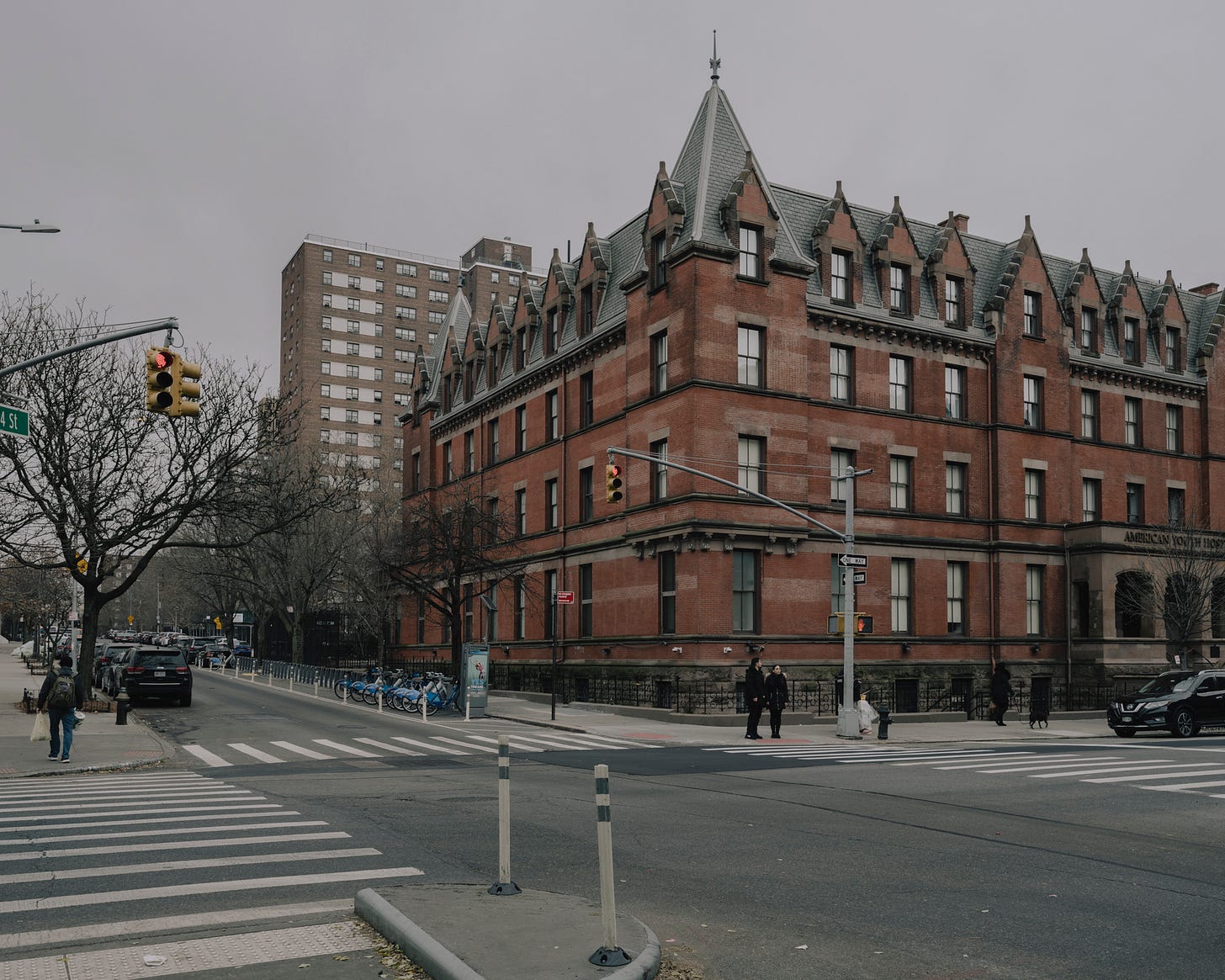
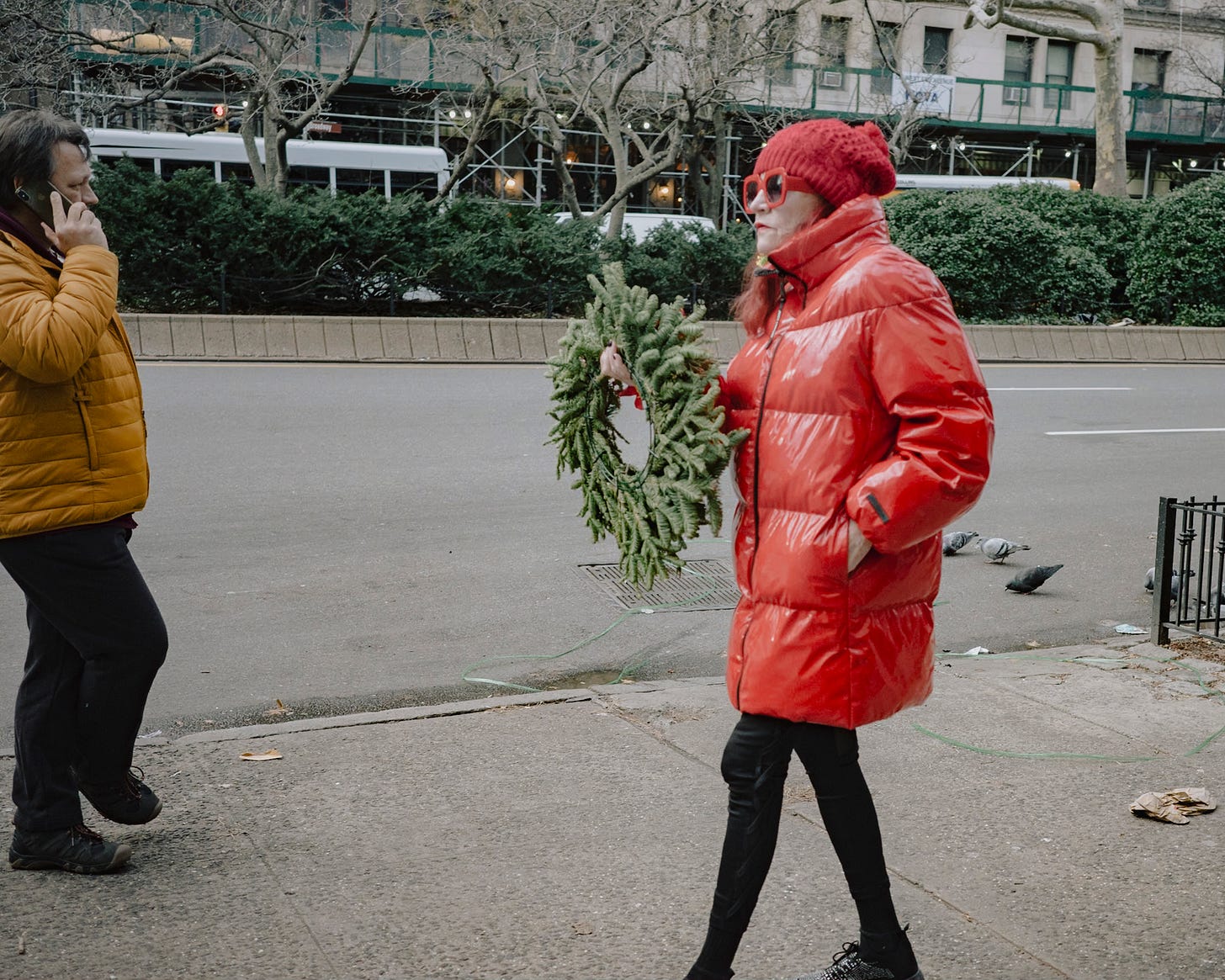
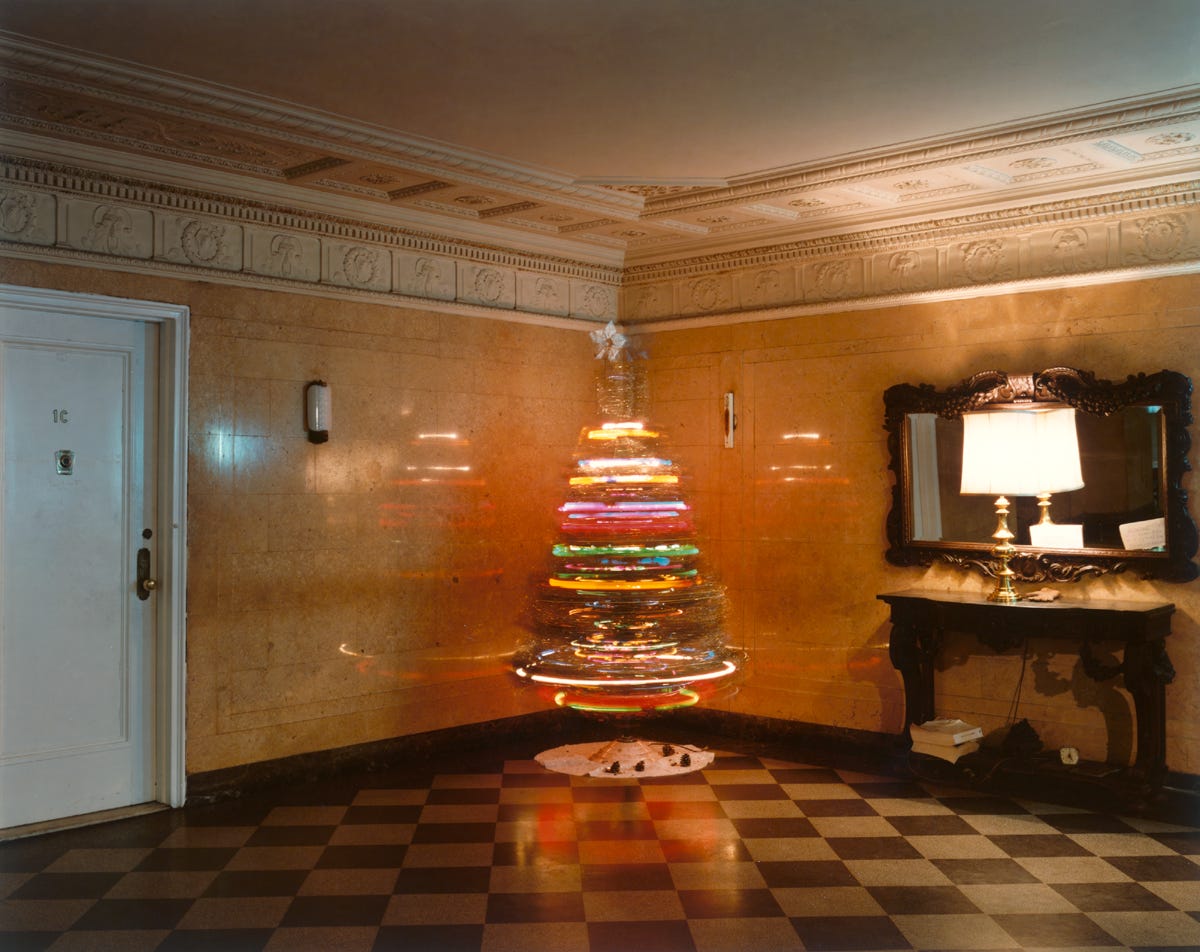


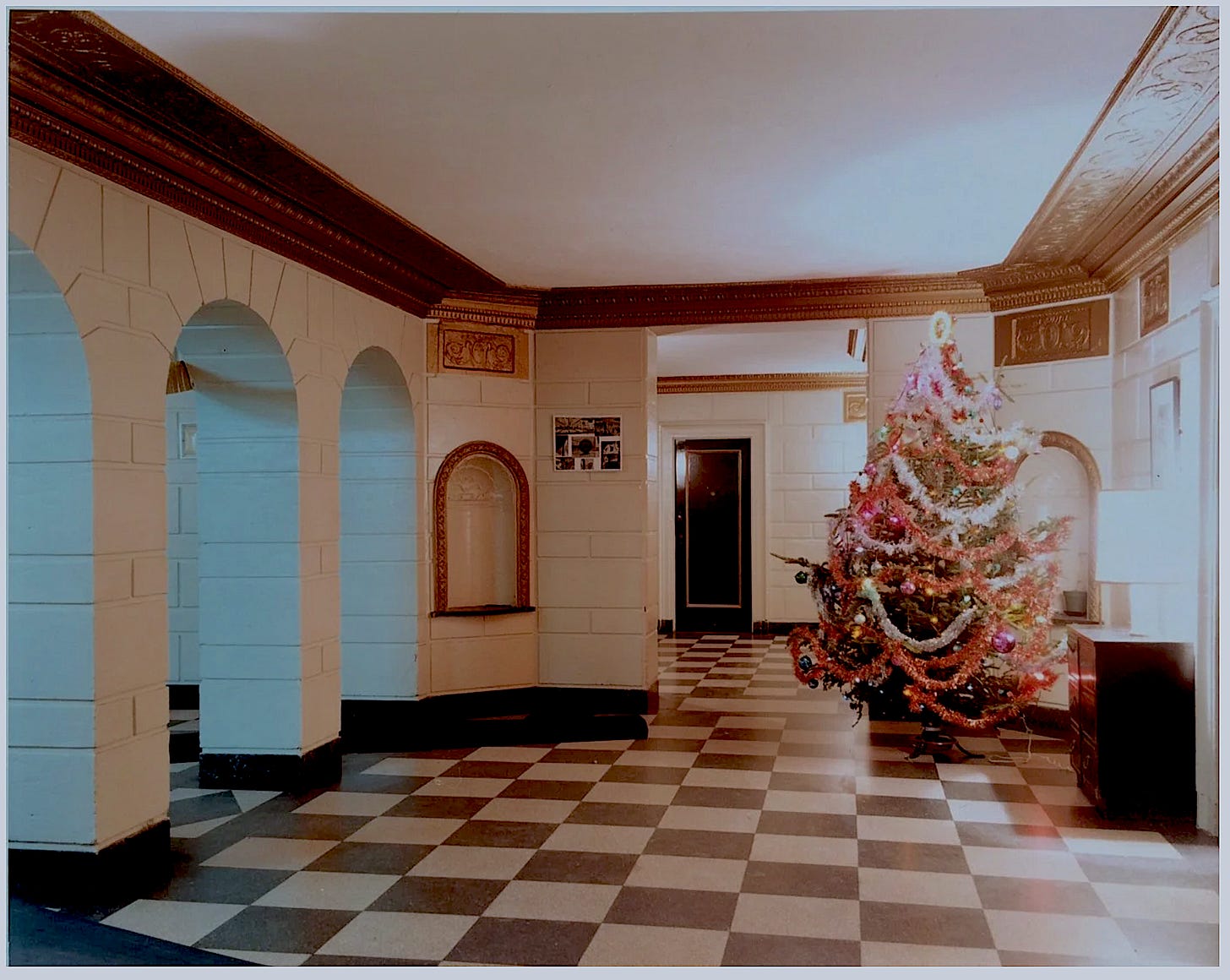


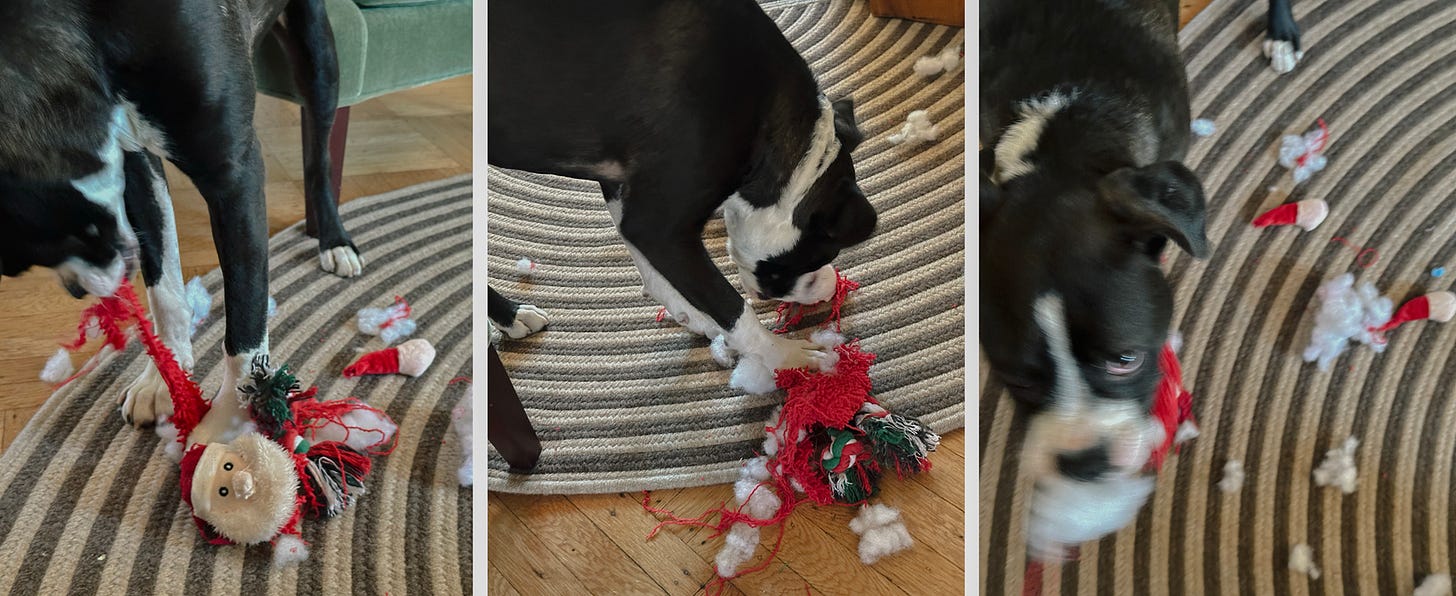
I have to ask:
One of the best known department stores in New York is the upscale couturier Bloomingdale's. Does the name of this store have anything to do with this neighborhood?
I grew up on the Upper West Side and never heard anyone refer to Bloomingdale as anything other than a department store or music school. In other words, I never ran into Joel Meyerowitz when I was growing up, though I admire his photography and support of dental hygiese.
I haven’t been to 99th and Broadway in a while, and I can’t believe the old Metro theater is still there, empty and crumbling. I remember seeing Back to the Future Part III there in 1990. Looking back, it’s possible that was the first movie I saw in theaters. In any case, the Metro was a dump. By the mid-90s, there were six movie theaters on the Upper West Side, and Metro was easily the worst.